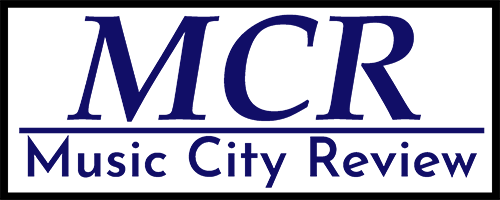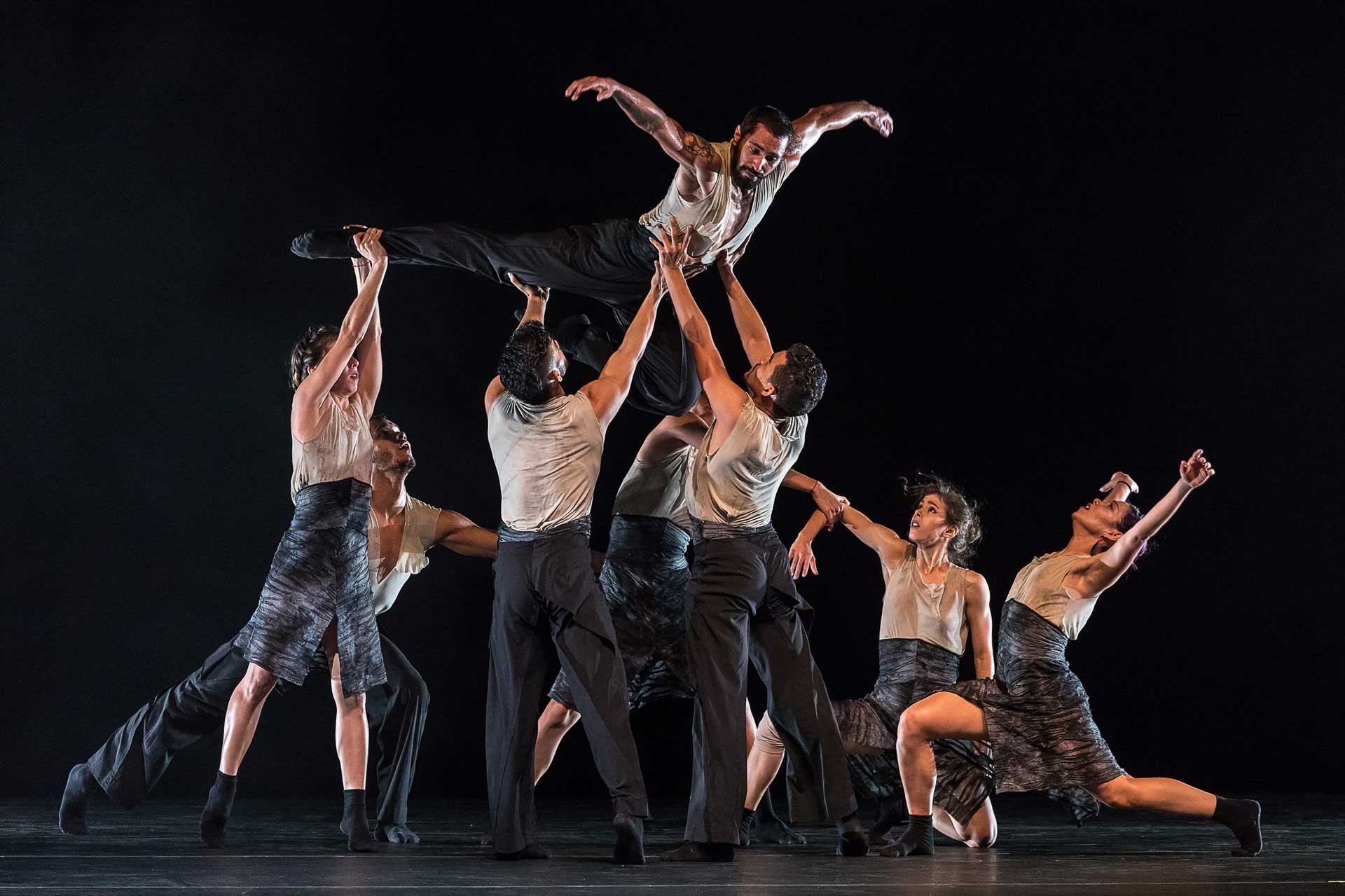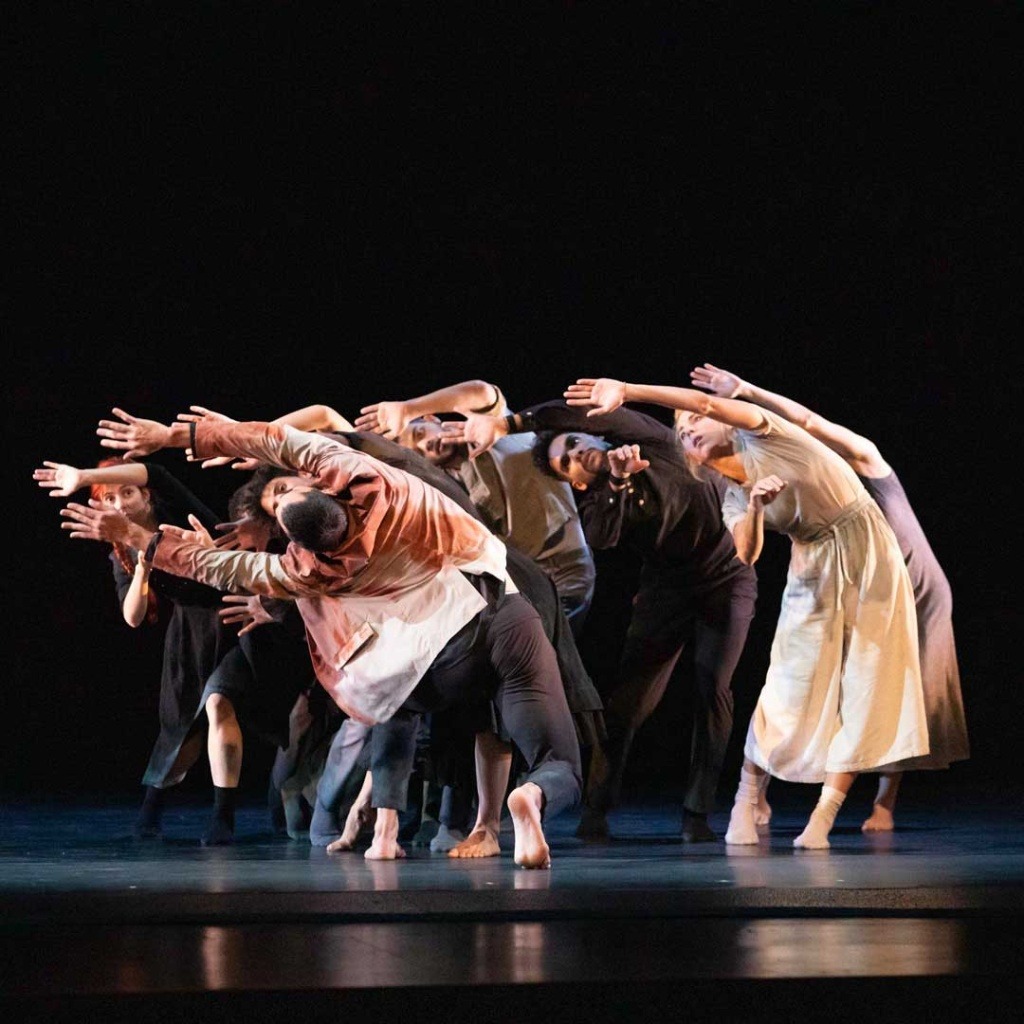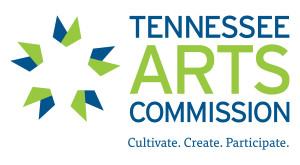New in the Music City:
Blueprint & Jacob Jezioro at the Axiom Art Gallery
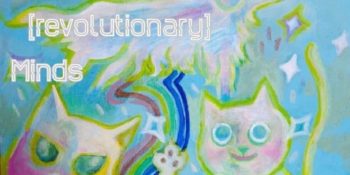
Nobody would blame you for missing the Axiom Art Gallery. Tucked away between Third Man Records and the Plaza art supplies store, the only signage in front of the building reads “Resident Parking Only.” It’s just as well, because the space in front of the vintage building that houses the Axiom Art Gallery leaves only enough room for a handful of cars. Fortunately, even on a Saturday night, this little elbow-shaped stretch of Seventh Avenue is quiet, either forgotten or yet-to-be-discovered compared to the hustle and bustle of the Gulch just a block or two to the West. So, you might have to hike a little, but parking’s no problem. The building has a wraparound porch and a number of large wooden doors, most of which apparently lead to private apartments. Tonight however, there were no issues figuring out which of the doors housed the art gallery. The swish of brushes on a snare drum and the probing sounds of a soloing tenor sax wafted out faintly from the front right door—exactly the sort of welcome you’d hope to get from a low-key event like this.

An event so low-key, in fact, I’m not even positive what to call it. The concert had a neat hand-painted poster floating around Twitter that featured a few ghostly-looking cats and dogs, one of the cats smiling pleasantly, the other with evil eyes and its claws poised threateningly. “Music to Ease Our [revolutionary] Minds” the poster reads with nothing else but a time and place. I never figured out if this was supposed to be the title or the subtitle of the evening, but I guess that ambiguity is the point. The words on the poster aren’t so much a title—a what this concert is supposed to be—but rather a description—a why make this music in the first place. And while I can’t say I ever pieced together the explicit political meaning of “Music to Ease Our [revolutionary] Minds,” I think getting caught up there misses the point. To give the performance a title and an explicit program would fix it in place and time. It would turn the living, breathing organism of structured, simultaneous improvisation into a fossilized museum piece completely out of the spirit of the whole affair. In other words, we have to understand music here not as a noun but as a verb. At one point in the night, right at the start of the second set, there was a bit of confusion as to which piece should go next. Performers and lead sheets were shuffled around the room as Jacob Jezioro, the force behind organizing the whole thing and the composer of a number of the works performed, conferred back and forth with his band. Finally, when things settled into place, Jezioro cried out “That’s jazz! That’s jazz everybody!”
You see that same spirit of improvisation in the putting-together of the whole concert too. Though Jezioro was the center of the evening, he shares the billing with Nashville’s Blueprint Ensemble, a relatively new ensemble looking to “[map] out the future of Art Music.” Blueprint was initially supposed to have a concert towards the beginning of March, which was unfortunately postponed. Jezioro, who was slated to play bass for Blueprint at this postponed show, suggested reworking a planned concert of his own into a collaboration—the setlist was reworked, some more members of the Blueprint Ensemble worked in, and the night was born. The performing lineup changed even more between the rebranding of the concert as a collaboration between Jezioro and the Blueprint Ensemble and the first downbeat. Chester Thompson, the legendary drummer, was apparently brought on to replace another drummer with barely a moment to spare. Sax player Joel Frahm, whose solos that night were unbelievable in their ability to thread the needle between scalar flourishes and almost-hummable tunefulness, glanced through a number of scores moments before the first set, occasionally asking Jezioro for clarification on a time signature here or an accidental there. And yet, you’d have no way of knowing. All of these musicians are Old Pros, putting together an entire evening of capital-G Great music in a way that’s hard enough to do with months of planning and the prospect of a big profit.
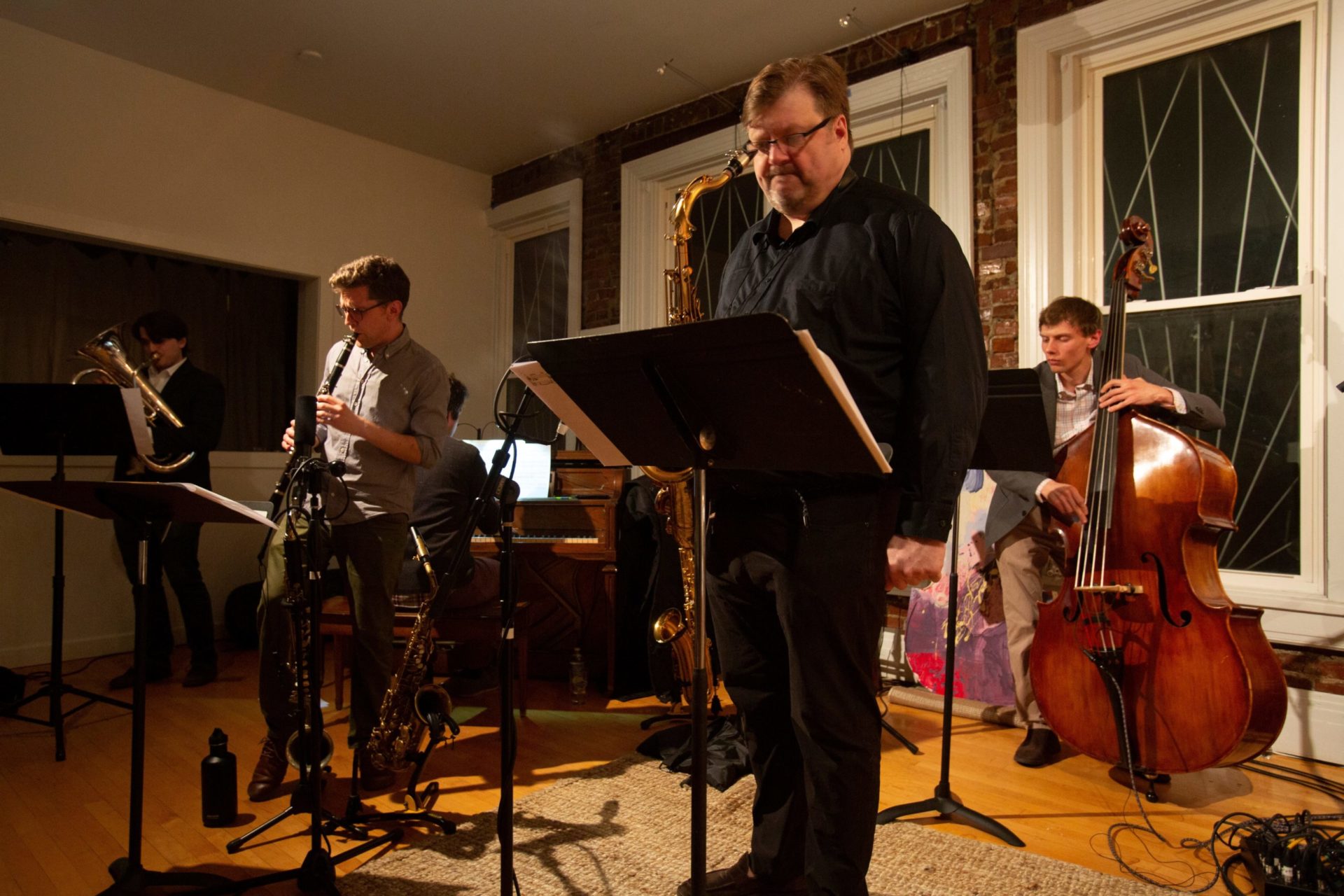
The Axiom Art Gallery might have housed twenty people that night all told, including the rotating group of performers, and there wasn’t much room for more. It’s a deliberately intimate space, perfectly suited to the spirit of Jezioro and the Blueprint Ensemble’s program. Most of the crowd knew each other and/or the performers, so even while you spent most of the night silent, breathlessly following another round of traded fours, there was a lovely social dimension to the proceedings. There’s nothing impersonal here. You’re making frequent eye contact with everyone, but especially the performers in a way that places you directly in the middle of the whole process. There’s no illusion that you are somehow on the outside, spectating neutrally. You get that sense that if you changed even a single thing about the setting, if even one person had decided to stay home that night, the fragile magic of the room would dissipate. Of course, it’s probably untrue, but if the Blueprint Ensemble are looking to program concerts in this space in the future, there’s certainly an opportunity to find or commission works that incorporate the audience more literally.
I think the boundary between performer and audience might be the final frontier. I said that I think we’re to understand music as a verb rather than a noun in this setting, and I think Jezioro’s program mostly achieves this. There was a dynamism to almost every aspect of this concert. Even its beginning feels less like a boundary than a suggestion, more an almost-overlookable change of atmosphere than anything else. Jezioro gave a few words of welcome and thanks to the in-person audience, but after he returned to his seat in the crowd, you would be forgiven for mistaking the beginning of Thompson’s improvised drum solo as him just testing his hi-hat. His first few hits feel almost non-metric, and the repetition of the same figure on the bass drum a few seconds later almost assures you he’s just warming up, that the real show is just about to start. And yet, just as soon as you’ve had a second to make sense of what you’ve heard, he’s moved on, now establishing more of a fixed groove, and it’s clear he’s soloing. The rest of the ensemble slowly peel off from the audience, one by one joining in. This improv gives way, again practically imperceptibly, to the first work on the setlist, a piece by Jezioro entitled Agape. It’s clear by the time David Williford is playing the tune on the clarinet that we’ve arrived at a Composition, a Text that can be said to exist in some form independently of its performance, and yet this gradual almost non-start refuses to give us that kind of certainty. It doesn’t so much reject the idea of the Text as remind us that what we call the Text isn’t something so much as it is a byproduct of performance itself, something we destroy in our attempts to contain it. Art, in other words, is something alive, and most concerts are more like a public execution.
I think there is one more dimension to the Text-ness of a work. It isn’t just a fuzziness between where one work starts and the other stops, or even the distance between the start of a work and the infinitesimal slice of silence that precedes it. Instead, like I’ve already mentioned, it’s where what’s being performed intersects with the audience there to hear it. The dynamic nature of jazz improv itself already interferes with this distinction. As anyone with even a shred of experience playing in a rhythm section knows, there’s as much moment-to-moment complexity in comping underneath a solo as there is to soloing itself. The process is necessarily interactive as jazz musicians play off one another both consciously and unconsciously in an almost intersubjective feedback loop where listening is playing and playing is listening. Therefore, to play a solo or to accompany a solo is to be both performer and audience member simultaneously, and yet, obviously, this same intersubjectivity can never really be shared by the audience. Axiom Art Gallery can make you feel like you’re sharing in it, but it’s always just right on the cusp.
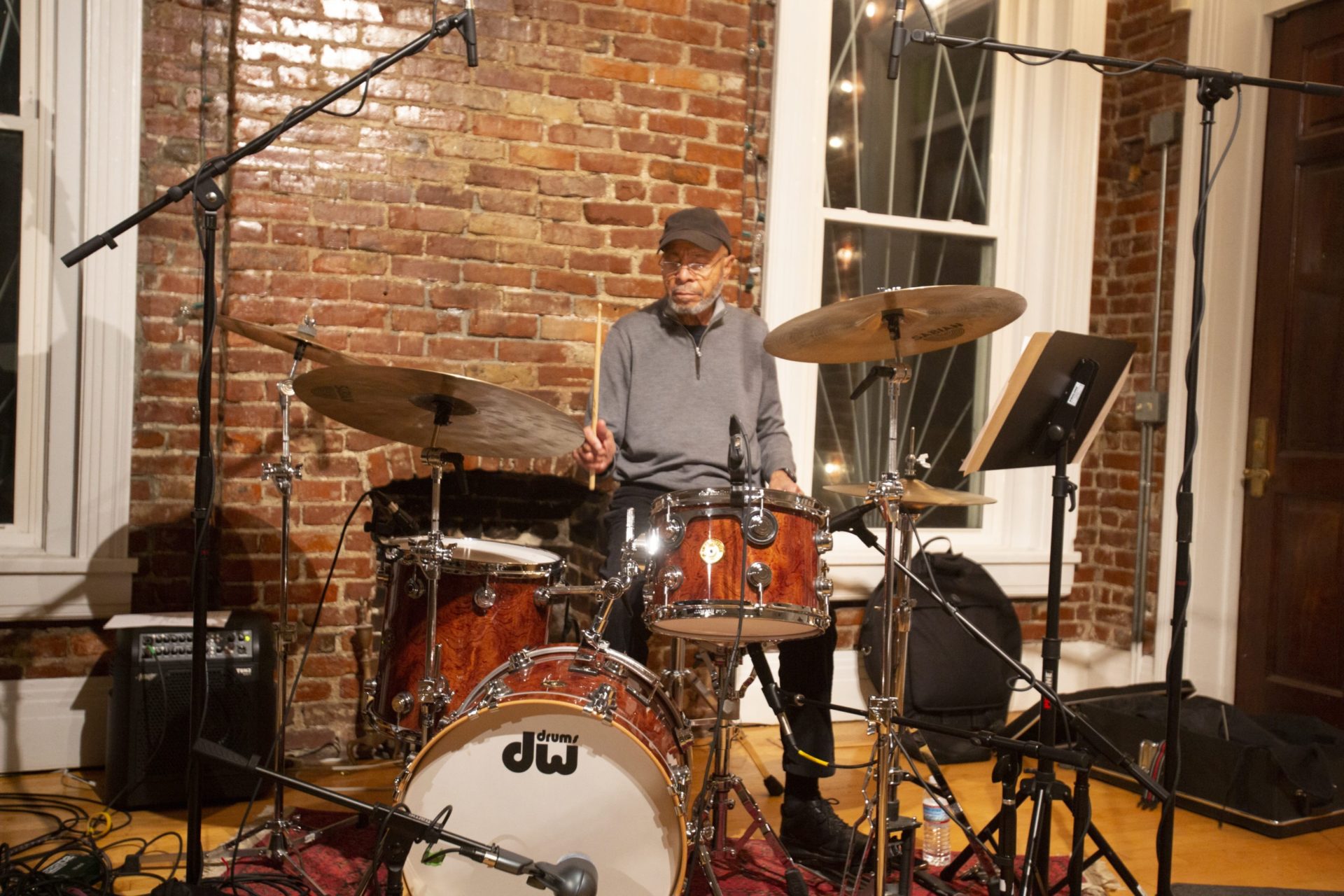
Never was this tension clearer than in the performance of the only not-explicitly-jazz work of the evening: Rodney Lister’s Sestina. The piece is aleatoric and consists of dozens of pre-written sets of pitches arranged into “measures.” An ensemble of performers is free to realize these pitches at whatever rhythm feels appropriate in the moment, so long as each performer moves from “measure” to “measure” at the same time. What you end up with in performance is an interesting obversion of the usual dynamics of jazz improv, where a common pulse and the architecture of the changes unify the proceedings. Instead, here the performers are all playing the same thing (or more or less the same thing) but irrespective of pulse or harmonization. It doesn’t come across so much as heterophony as a kind of controlled, deliberate cacophony. The performers can’t listen to each other, or at least ought not to, because the only possibility of synchronization is a kind of monophony the random nature of the piece seems intent on subverting. The audience, however, must listen. You have no other choice. If any meaning, if anything Text-like, is to be found here, it must be sussed out, must be invented by the listener in real time. We’re left here with a compelling, largely unresolvable paradox. Much of the spiritual/philosophical motivation for aleatoric music (especially that of John Cage’s) was the eradication, or at least a radical de-centering, of the “authority” of the author over the text. It’s an early expression of what we’d now call post-structuralism, a term that’s only ever loosely defined, and more often than not applied to an artist, work, or school of thought rather than claimed by one. In any case, the tenets of post-structuralism have found far more purchase in writings about music (including my own) than in music itself. And here it’s not hard to see why. Aleatory may make delineating between Author and Text more challenging, but if anything seems to draw the distinction between performer and audience into sharp relief.
I suppose this is why I found the way the gallery was arranged for the concert to be so striking. The art in the gallery still hung on the walls, but we in the audience sat with our backs to it, the ensemble playing directly at it. Why is this, I wonder? Maybe it has to do with purely technical considerations. The event was, after all, livestreamed on YouTube (and remains available at this link: https://www.youtube.com/watch?v=ZTfCBRKhy8U), so there could have been any number of IT reasons the ensemble was on one side of the gallery and the chairs for the audience the other. But even if unintentional, I’m left wondering if the arrangement worked to keep the audience from looking at the fixed works on the wall, or if the design forced the performers to fixate on them, in some sense perform for them, in a way that confuses this whole matter for me even more.
Live in Franklin:
LAGQ Concert at Franklin Theatre
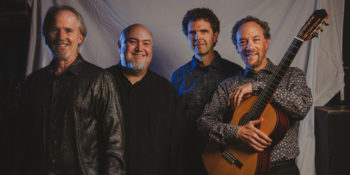
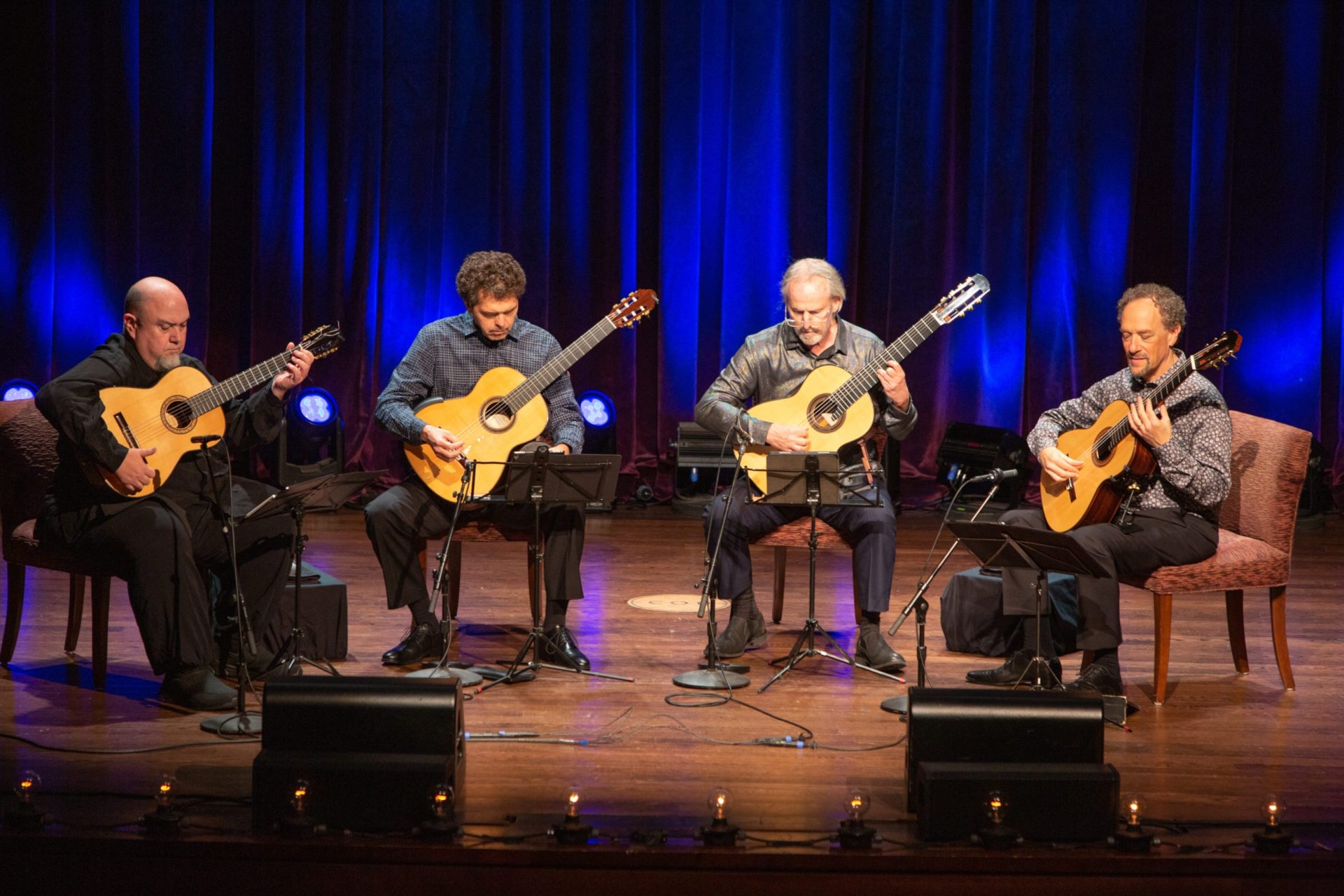
The Los Angeles Guitar Quartet brought a warmth to Franklin Theatre on an April night of near freezing temperatures at show time. The intimacy in which the four guitarists blend their sound suited the small crowd. One patron informed me that LAGQ had been booked for dates nearly two years ago but was postponed until events could resume without pandemic restrictions. Now the quartet begins a three-show stint at Franklin Theatre before heading to Oak Ridge, TN.
We were a special crowd due to the fact that LAGQ released their album Opalescent that day and were happy to feature some of the works from the record. This would be their first live performance in quite some time in a year in which they celebrate 40 years as a quartet.
After opening with an excellent arrangement of “Hungarian Rhapsody No. 2”, member Bill Kanengiser introduced the piece “Opals” by Phillip Houghton and explained how the music depicts “the glints and reflections of the gemstones.” Houghton was a synesthete meaning he saw specific colors when he heard musical tones. Kanengiser explained that in the score he writes certain colors that are represented above some notes.
“Chorale” by Frederic Hand was performed with the utmost attention to ensemble interplay with the purpose of turning four guitars into an acapella vocal ensemble. As all four musicians took cues from their scores on music stands, I could not help but think that they were putting more into the music than just reading from the page. There was very little physicality happening on stage but the sound had this wonderfully dense, warm harmonic movement that swept you along.
John Dearman introduced two movements from Road to the Sun (2021), a project composed by Jazz legend Pat Metheny for LAGQ. Metheny’s themes weave in and out of colorful harmonies and the four guitarists are constantly trading melody, strummed chords, and other parts of the music. This lengthy performance that pulled us into the musical world of a brilliant composer and defied genre took us into an intermission.
Returning from the break, Matt Grief spoke about a past project called Guitar Heroes (2004) that featured the group’s arrangements of some of their favorites. These tunes included an infectiously groovy “Peaches en Regalia” by Frank Zappa and an elegant medley of “Blue Ocean Echo” and “Country Gentleman” by Chet Atkins with a coda of “Wind Cries Mary” by Jimi Hendrix seamlessly added on. Matt Grief subtly slipped a glass slide on his left hand to add something special to the Chet Atkins songs and completely fooled us that he was still playing a classical guitar!
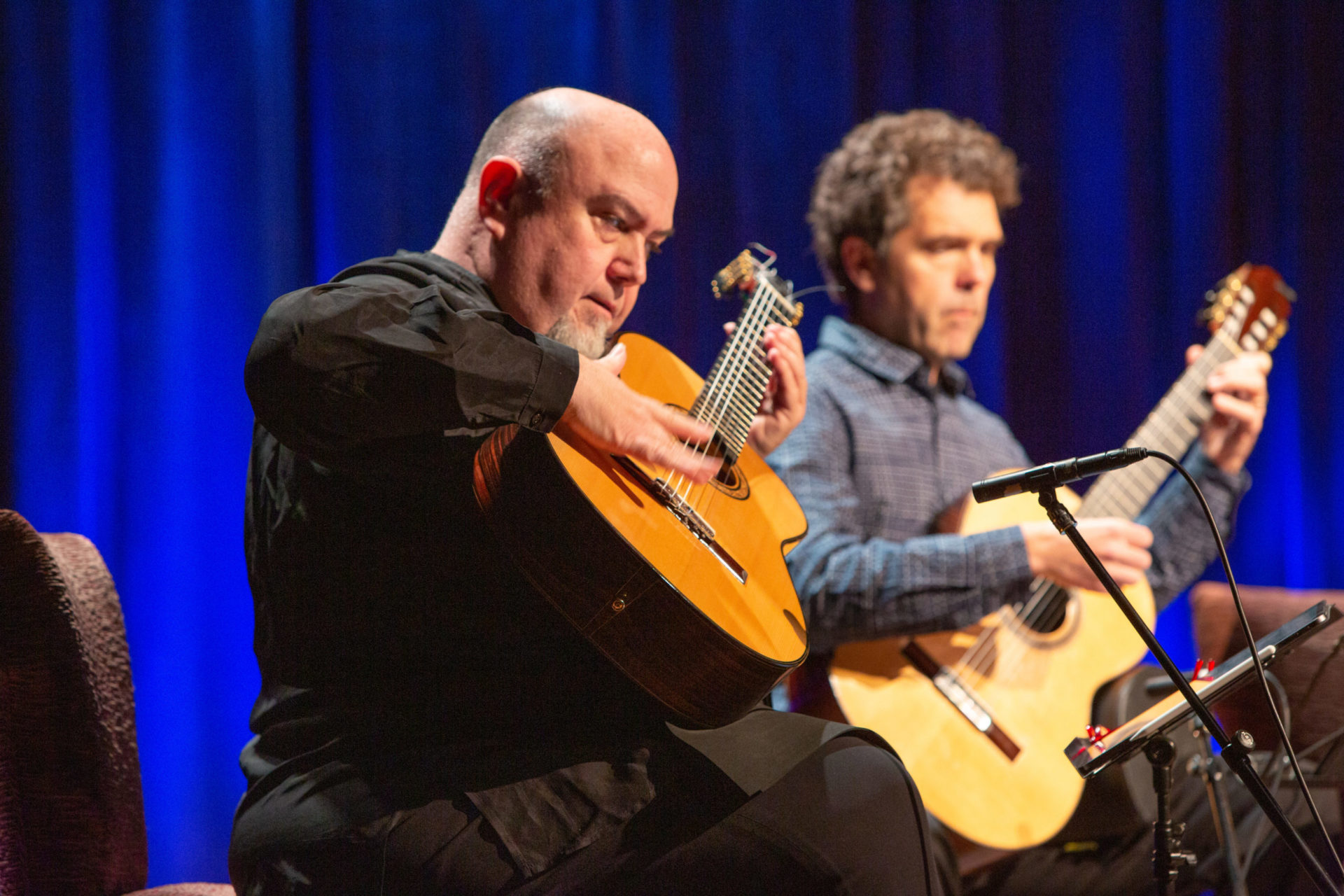
The audience cameras went up during the second movement of Beethoven’s “Moonlight Sonata” which Scott Tennant introduced as a special arrangement done by Bill Kanengiser after an invitation to the Beethoven Fest. It was captivating and especially effective for guitar, making good use of the bass notes on John Dearman’s 7-string guitar.
The finale was an explosion of notes from composer Manuel de Falla’s El Amor Brujo. The two movements “Canción del fuego fatuo” and “Danza ritual del fuego” satisfied the crave for Spanish guitar music and exhibited some of the polished musicianship that comes with 40 years experience performing as a group.
The LAGQ have been inducted into the Guitar Foundation of America’s hall of fame and received the honor from Pepe Romero of the famed quartet The Romeros in a special 2021 ceremony. In a conversation with Bill Kanengiser one week before this show, he told me they have enjoyed the journey and he addressed the future of the guitar ensemble by saying the guitar quartet is here to stay. We are thankful to have hosted them here in middle Tennessee and I believe LAGQ will continue to bring these high level performances to audiences across the country for many more years.
From Nashville Opera
Rigoletto Noir…Finally!
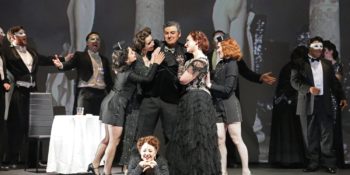
Over the weekend, Nashville Opera finally managed to pull off their long-awaited Rigoletto Noir, complete with a three-minute, film-noir-inspired cinematic short created by Nashville natives Chris Hollo and Mark Mosrie of Penumbra Entertainment. While I wouldn’t go so far as to say it was worth the wait (nothing is worth the pandemic) the
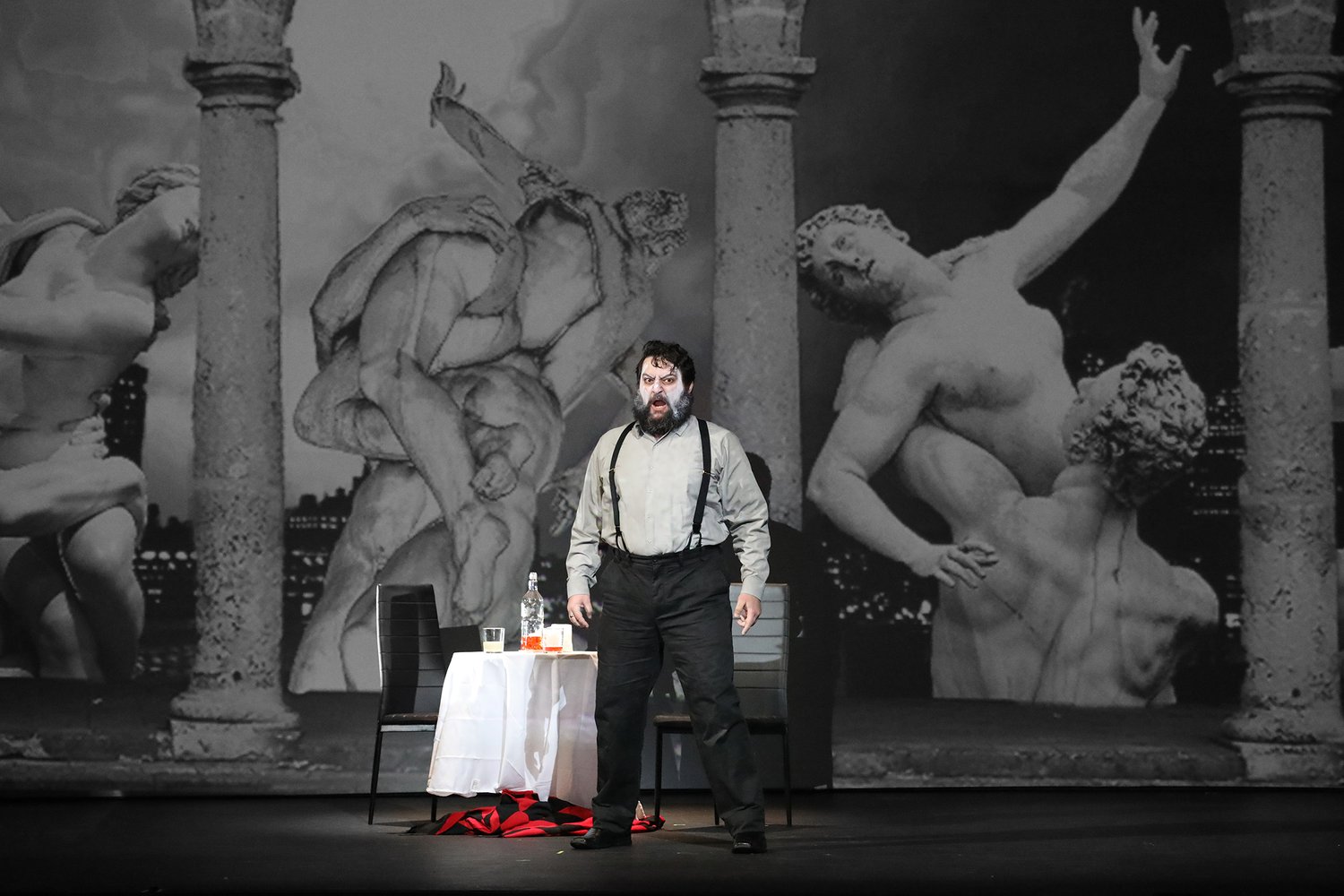
evening seemed like a wonderful return to the way things used to be. When it comes to Italian opera, Giuseppe Verdi’s Rigoletto is a chestnut and has been one since its triumphant 1851 premiere in Venice, and this is despite its dark subject matter—Venetian Police Censors attributed a “‘disgusting immorality and obscene triviality” to Piave’s tragic libretto. Remarkably, this makes for an excellent noir narrative, a film genre characterized by cynicism and tragedy, and thankfully, Director Hoomes managed to avoid the trap of genre parody.
Onstage and fresh from his appearance as Shchelkalov in Boris Godunov at the Met, Ukrainian baritone Aleksey Bogdanov played an outstanding Rigoletto. With a dark instrument, awash in luster and bluster, and a charming presence in the Duke’s court, Bogdanov’s Rigoletto quickly becomes as threatening and self-centered as Leoncavallo’s Canino (shame in clown makeup and all) by the banks of the Cumberland (this staging is set in the Music City). Indeed, the brilliant staging has more than a little commedia dell’arte to it. Rigoletto’s jester’s smock, a part of his costume of shame, is patterned in blood red harlequin diamonds.
As Gilda, Soprano Sarah Coburn was beautiful, gentle, and delicate but with a full, bright instrument. Her “Caro nome” was the ideal. The fulcrum of Verdi’s tragedy, her character has a direct and predictable arc, which is central to the staging’s subtly diagetic, and yet ignored, expressions. As the Duke, tenor Daniel Montenegro seemed to have an off night (Thursday). His intonation and color were quite good in solo pieces, but just a bit weak in volume. It must be said that this role is a terrifying challenge given how often it has been sung by the great tenors—Pavarotti, Domingo, Carreras etc… The challenges created by this were well handled in the adaptive balance maintained by Maestro Williamson and Nashville Opera Orchestra. Unfortunately, Montenegro was often all but drowned out in the ensembles, especially the famous quartet in the grand finale.
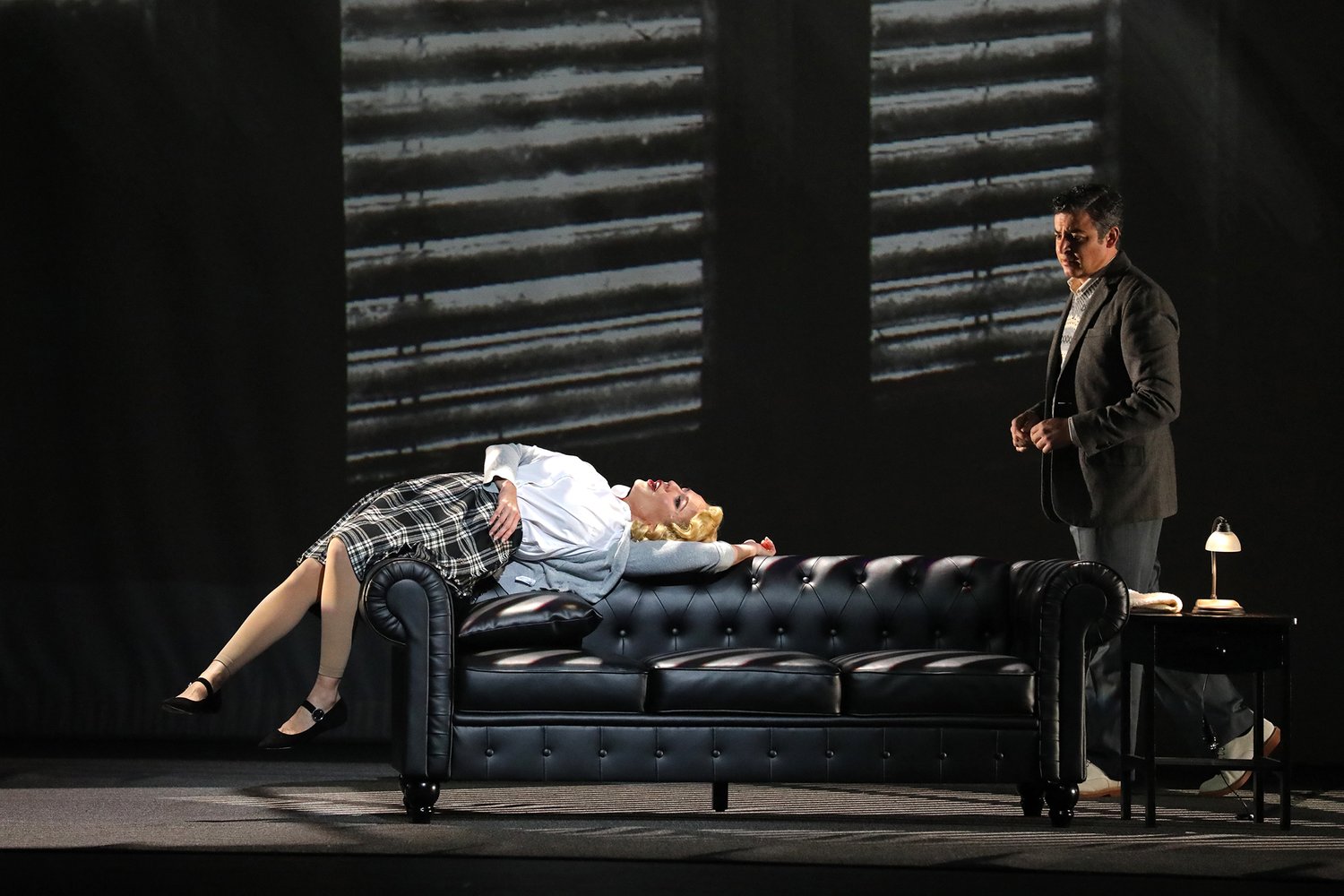
Dean Williamson led the Nashville Opera Orchestra quite well, with nuance and a sense of forward motion. The opening scene complex with its sections of contrasting yet continuous music was quite fun and the chilling moments (the brassy curse idea in the overture, the sinister strings and woodwinds in Rigoletto’s duet with Sparafucile) were scarier than I think I have ever heard them.
The Courtiers were very well prepared by Amy Tate Williams, participating in the great fun of precipitating a tragedy. Their aural appearance as the wind in the great finale was absolutely chilling. Mezzo Emily Triebold was seductive and darling as Giovanni, and Kevin Thompson brought a pragmatic business sense and a huge bass voice to the role of the assassin Sparafucile. The costuming (June Kingsbury) Wigs & Makeup (Sondra Notttingham) and Lighting/Video Design (Barry Steele) deserve special mention for their huge contribution to this spot-on production. The biggest drawback, and probably what might fairly be considered Nashville Opera’s curse all these years is the hall. Andrew Jackson Hall at TPAC is just horrible for opera—too big and the sound and nuance gets lost in all that space. One waits in anticipation for Nashville Opera’s May 6 and 8 production of Richard Wagner’s music drama Das Rheingold in Belmont’s fancy-pants new performance hall. Perhaps it will have better acoustics.
The Nashville Symphony plays Coleridge-Taylor, Debussy, and Mendelssohn
Nature’s Passion on Land and Sea
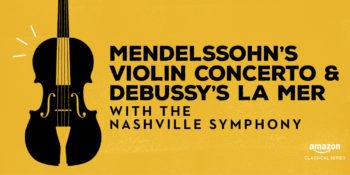
On Sunday, April 10 2022 at 2 pm in the Schermerhorn Center, the Nashville Symphony continued its “Classical Series” with four works, two familiar and two relatively unknown in the US. Each half opened with a composition by Samuel Coleridge-Taylor (1875–1912). After starting violin studies with his father, a descendant of American slaves relocated by the British to Sierra Leone, the prodigy Coleridge-Taylor entered the Royal College of Music in London at the age of fifteen. Later, he was mentored by English musical icon, Edward Elgar.
Coleridge-Taylor not only celebrated his own musical heritage, but he was open to other cultures, including tales of Native Americans. With guest Thomas Wilkins, principal conductor of the Hollywood Bowl Orchestra, the Symphony played three movements from the Hiawatha Suite, op 82, based on excerpts from the composer’s Song of Hiawatha cantata cycle, itself based on Henry Wadsworth Longfellow’s epic poem. The orchestra immediately set a lush orchestral timbre of muted strings and a beautifully played solo by Erik Gratton, principal flutist, floating ethereally above the pastoral first movement where Hiawatha woos Minnehaha in the forest.
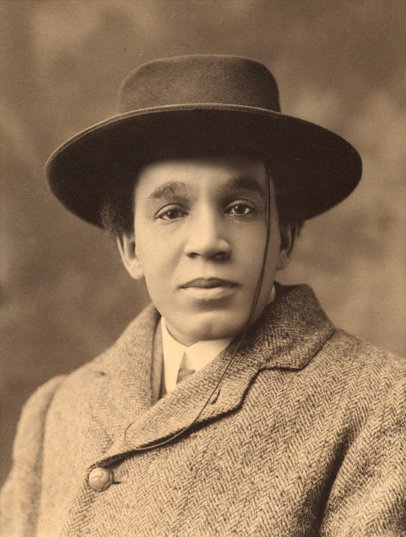
The delightful “Marriage Feast” had just the right degree of playful charm before the majestic ending with a sizable string section blending well with the brasses. The last movement of this set, “Conjurer’s Dance,” began with an anticipatory tension similar to the final “Witches Dance” of Berlioz’ Symphonie Fantastique, its sections of demonic sprightliness, beautifully executed.
Coleridge-Taylor’s Ballade, op 33, marked enérgico, launching the second half, effectively characterizing a variety of tempo and affect changes from genteel to passionate, delicate to dramatic. Although the sound remained luscious or light as appropriate, the many noted tempo changes seemed a bit too restrained, too cautious—the appassionata lacking passion; the con fuoco lacking fire. But overall these well-received performances lit a fire under the audience, convincing them that this was a composer to be reckoned with. It’s no surprise, that having heard his works during three US tours, President Theodore Roosevelt invited Coleridge-Taylor to the White House to honor his service to music. Although little-known today, Coleridge-Taylor’s Hiawatha often vies with Handel’s Messiah for popularity among choral groups in the UK. Serendipitously, Messiah is the next concert in NSO’s classical series, April 14–16, 2022. Tickets available here.
Ending the first half was Mendelssohn’s famed violin concerto, featuring Adele Anthony. Like Tchaikovsky’s Nutcracker, Mendelssohn’s concerto is a perennial favorite that continues to draw audiences over a century after its premiere. Fan favorites like these bring in ticket fees that help sustain organizations like the Nashville Symphony, especially as arts organizations rebuild from the ravages of Covid cancellations.
However, for a piece this renowned, the soloist and/or the conductor need to have a vision of offering either a perfection of performance traditions, or a new take on the work’s subtleties. Of course, this concerto is written so well that if the soloist and orchestra merely conquer the many challenges Mendelssohn wrote—notes, tempos, dynamics—the piece will excite audiences as it did in this performance. But should that be enough?
In each movement, Mendelssohn included one of three stylistic tropes common in this part of the Romantic era: Sturm und Drang, Emfindsamer, and brilliante. The first movement, marked “molto appassionato” should be Sturm und Drang, full of sound and fury, but this performance would be deemed “B-flat” in jazz, fully competent, but not much more.

This uninspired quality continued through the second movement which should have represented Empfindsamkeit, the sensitive, emotional style found in literary works like those of the Brontës where the chains of a rigid society bind passionate hearts. This part, the best opportunity for Anthony to really “sing” was, metaphorically, out of tune, with little sense of line or nuance.
The last movement showed her real strength. It is the flashiest of the three, with lots of notes, tons of speed, tricky passages out the wazoo— a major part of the concerto’s value as a crowd pleaser. Anthony handled all this with ease, seeming to enjoy herself for the first time in the concerto. It was disappointing that the emotional depth needed for the first two movements didn’t match the joyous bravura of the finale.
The program’s final work, Claude Debussy’s La mer was a marvel of a performance. La mer, his “sonic portrait of the sea,” is a masterwork of Impressionism in which the composer sought to produce “the mysterious correspondences which link Nature with Imagination.”
Reports of Debussy conducting this work describe him as “stiff” with an almost obsessive attention to detail. Wilkins used efficient, almost utilitarian movements, with no large dramatic gestures like Leonard Bernstein in his heyday, but the proof is in the results. Like Poseidon, Wilkins was able to command the waves of La mer. As in the Coleridge-Taylor suite, the opening timbral seascape of “From dawn to noon on the sea” was exquisite with Debussy’s occasional use of Japanese modes shining with just the right amount of delicacy. Occasionally, mid-movement, the tonal quality and blend lost some purity and direction but the entry of the French horns and trombones reshaped the waves before the audience broke the mood with spattered applause between movements.
Some of Debussy’s most challenging orchestration is found in “Play of the Waves.” The magical timbre added by the glockenspiel and, toward the end of the movement, the unlikely but perfect synthesis of piccolo, harp, and basses was handled masterfully. During the bows, alongside soloists among the winds and strings, the conductor appropriately acknowledged the entire cello and percussion sections, the firm canvas for this lyrical portrait.
But before that, came the “Dialogue of the wind and the sea.” Once more the momentum briefly flagged, but once again, the horn entries guided the stormy waters toward a dynamic finish. I’ve always thought that a compelling performance of even the most emotionally or intellectually challenging work can convince the audience of the composer’s greatness. That was the case here. Debussy is not a facile listening experience, but the Symphony convinced a willing audience of La mer‘s greatness, responding with vigorous applause.
The MCR Interview:
Bill Kanengiser of the Los Angeles Guitar Quartet

The Los Angeles Guitar Quartet (LAGQ) is marking their 40th anniversary with the release of Opalescent, a collection of works that “explore the luminous nature of music.” It features pieces by Australian composer Phillip Houghton that “explore the synesthetic intermingling of light and sound” and is dedicated to his memory. The album artwork features 3 dimensional images of Australia’s national gemstone created by graphic designer Camille Kanengiser. The concert will premiere “Chaconne” by Robert Beaser and include other works commissioned by, or dedicated to, LAGQ.
Jacob Hendley of the Music City Review, spoke with Bill Kanengiser of LAGQ on April 8th to discuss the upcoming release, the live concerts in Franklin, TN and 40 years together as LAGQ.
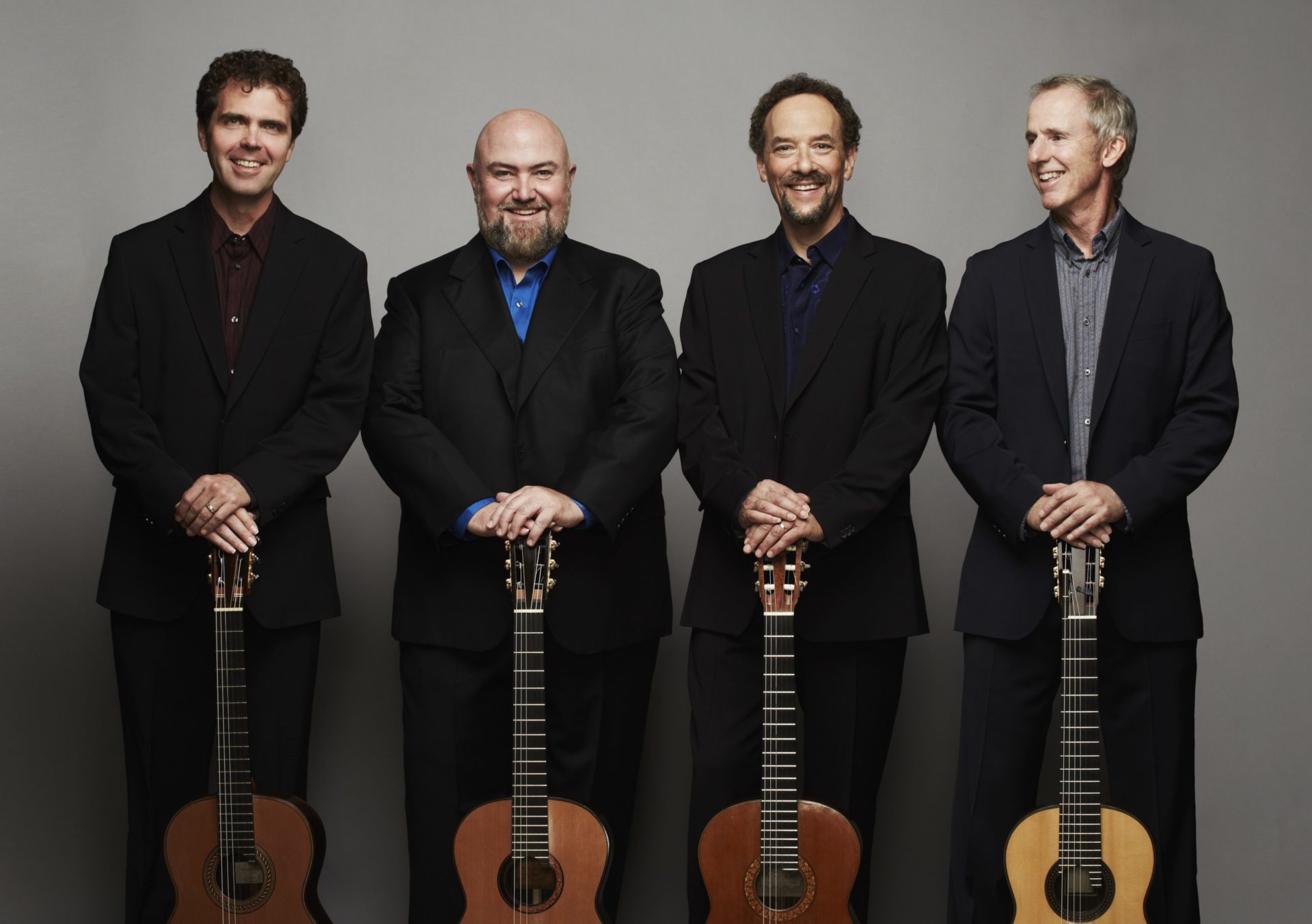
JH: Next Friday Opalescent will be self-released by LAGQ. You all have been on many different labels so why does self-releasing this one make sense for the group and what was it like getting to work with Camille Kanengiser and the others on this?
BK: Over the years we’ve been with some major labels like Sony, Classic, and Telarc with whom we’ve had a long relationship. As everybody knows, there have been seismic changes in the recording industry, so it was about 6 or 7 years ago we decided to release a project called New Renaissance on our own. I’m more proud of that record personally than any other one we did because we took ownership of every aspect of it. We agonized over every little comma and exclamation point in the program notes, we oversaw the editing and the mixing and mastering, and we learned so much about what goes into recording an album and all the little details of getting it out. Music copyright clearances and all that sort of stuff. Then we recorded the music for this newest record before the pandemic but it got put on the back burner like everything else. This one was much easier to do though after climbing up the learning curve on the first one. Personally, I found it really fun to work on this record especially because I got to work on this with my daughter who is one of the artists and I got to work very closely with the graphic designer and people like that. We also had a phenomenal producer for this one.
JH: Is that Steve Rodby?
BK: Yes, we met him when we recorded the Pat Metheny project, and he co-produced that record (Road to the Sun). He was a member of the Pat Metheny Group for years and is an unbelievable bass player but he’s also a Grammy winning producer. I don’t think we’ve ever had a producer who’s so meticulous and so passionate about the project. He really blew me away.
JH: This was recorded mostly in 2019, before the pandemic, right? So, a few years later this record release coincides with LAGQ’s 40th anniversary. The original plan wasn’t to sit on the music for that amount of time, was it?
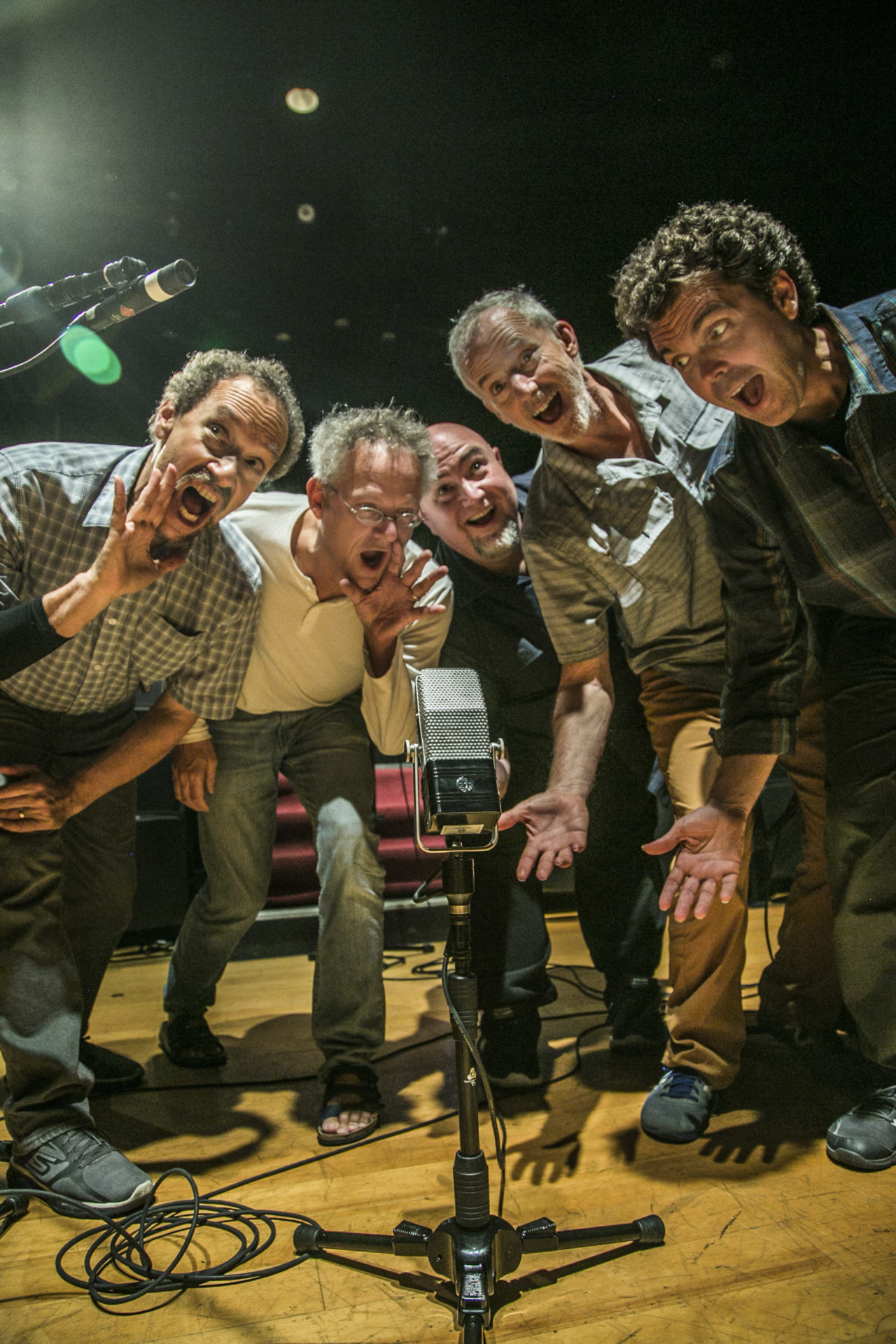
BK: It was about two and a half years ago we recorded it. One of the pieces (“Suite Transcendent”) by Tilman Hopstock we recorded earlier. It was a long birthing process, but the timing worked out perfectly. It’s pretty interesting the actual release date is also the first public live performance in the US in almost a year for us. And so, we are debuting it in Franklin! Really excited.
JH: You all will be here for 3 dates in Franklin. Is that the opener to a US tour with other dates?
BK: After we’re in Franklin we are going over to Oak Ridge, the other side of the state. Then we have some other dates coming up in the Pacific Northwest and in California. It’s not a huge tour yet so we are waiting for things to open up a little bit more.
JH: What made you choose this Nashville area? Have you played the Franklin Theater before?
BK: We played at Ryman once! It was such a thrill for us to play there and to go backstage and see the documentation of all the greats who played there. That was during our “Guitar Heroes” tour so we were playing some Chet (Atkins) and stuff like that.
JH: I remember seeing you guys perform a few years back and had a Chet tune in the program. I’m excited for this Friday night, is the plan to play music off this album? Maybe the whole album?
BK: We’re not doing the whole album, but we definitely are doing two of our favorites from the record. We’re featuring this beautiful piece by Australian composer Phillip Houghton called “Opals”. The opal is the national stone of Australia and the 3 movements depict 3 kinds of opals, the black opal, water opal, and white opal. He was what’s called a synesthete so when he heard musical tones, he saw specific colors. The idea with this piece is that when you’re listening to it you can almost imagine holding an opal in your hand and rotating it, the little glints of light coming through the stone. His style is just wonderful. It’s got a rock element to it but also kind of a minimal element to it and its modern music but kind of enveloping and just really, really beautiful music.
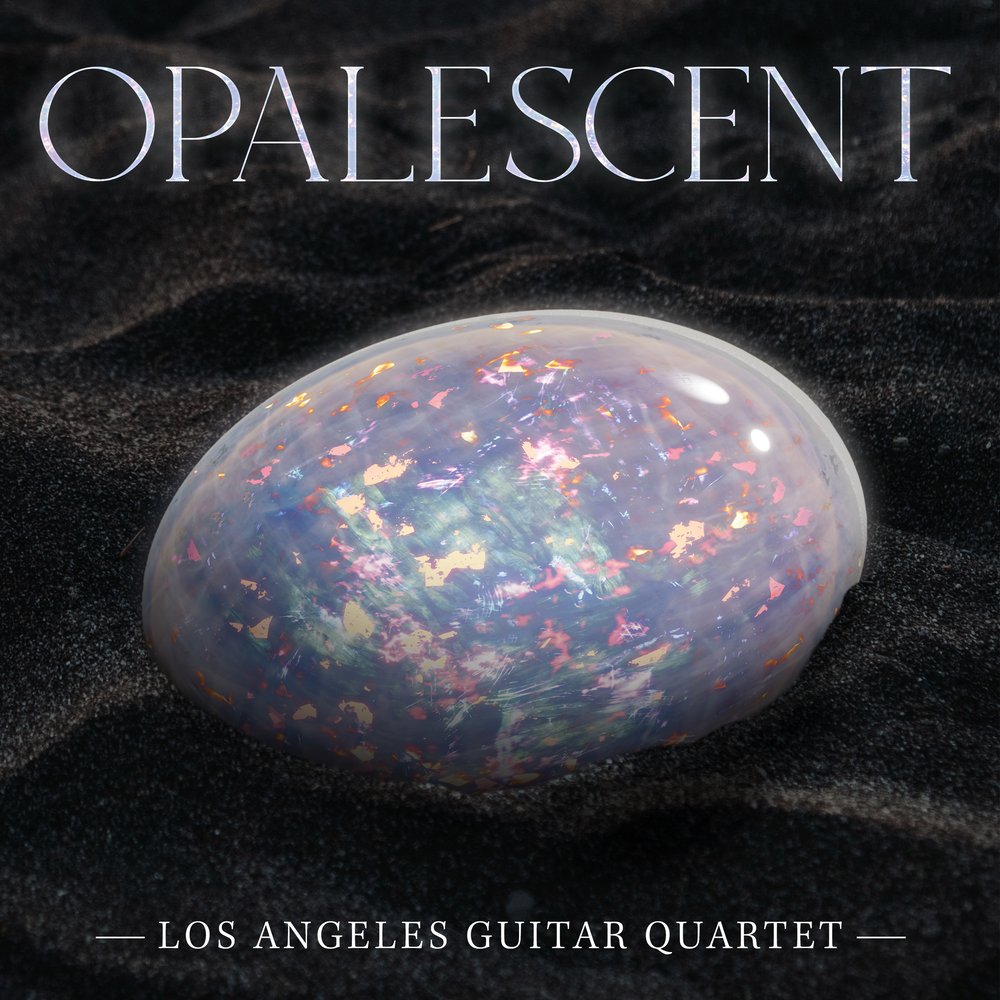
JH: The 3 movements were lovely to listen to. I was really lost in “Water Opal” with the strummed chords and the color.
BK: Yeah, you really feel like you’re just floating. He has this amazing ability to make you feel like your own breath slows down with the piece, this meditative thing. It’s really part of this whole aesthetic of the school of Australian composition that’s very rooted in nature, being in touch with the earth. And we dedicated this piece to his memory; he passed away a couple years ago.
The other piece we are doing from the record is by a good friend of mine named Frederic Hand. He’s kind of a legend in the New York guitar scene. He really straddles the jazz and classical guitar world beautifully and the piece we’re doing is called “Chorale”. It’s a gorgeous piece that has a lyrical sense but then there’s definitely a jazz harmony undertone to it. As a quartet, we really enjoy the push and pull of time in this piece.
JH: And in a good hall I imagine this will come out clearly and we can watch the communication among the four of you and also just hear the space between notes.
BK: The communication between the four of us has to be really clear and sometimes we do it with nodding the head, or breathing, or a lift of the eyebrow or something but in a way, it’s almost more that the four of us try to hear the whole group together and not our individual part.
JH: Can you speak on why you think some of these other pieces “work” in terms of the music representing or connecting to visual experiences? I know one is “Alki Point”, a location. How does Kevin Callahan capture that?
BK: When the piece starts, this opening motif is passed from one side of the stereo field to the other where each of us plays this in alternation. Exactly what the visual is of this, I think for Kevin it was standing on the shore of this point and seeing the light glistening off the water. You know it’s Puget Sound and I know this is kind of corny but it’s like you see the sound. It’s a pretty eclectic piece. But like all the music on the record, we hope it’s really colorful.
JH: The Road to the Sun record with Pat Metheny was a big project and seemed very hands on too. I think he spent a lot of time with you guys on site for recording and this one was no different. Is that something the quartet enjoys and thrives on, when they have those composers and artists in the room?
BK: We’re still kind of pinching ourselves that Pat Metheny even knew who we were, much less wrote an almost 30 minute piece for us and produced a record. The process with that was really collaborative and it was a very similar thing with this record. I worked directly with Fred Hand and Kevin Callahan to adapt their pieces for us. The big premiere piece on this record is “Chaconne” by Robert Beaser and we worked really closely together on that score. Whenever possible we love to work directly with the composers and make sure the piece is really adapted to us.
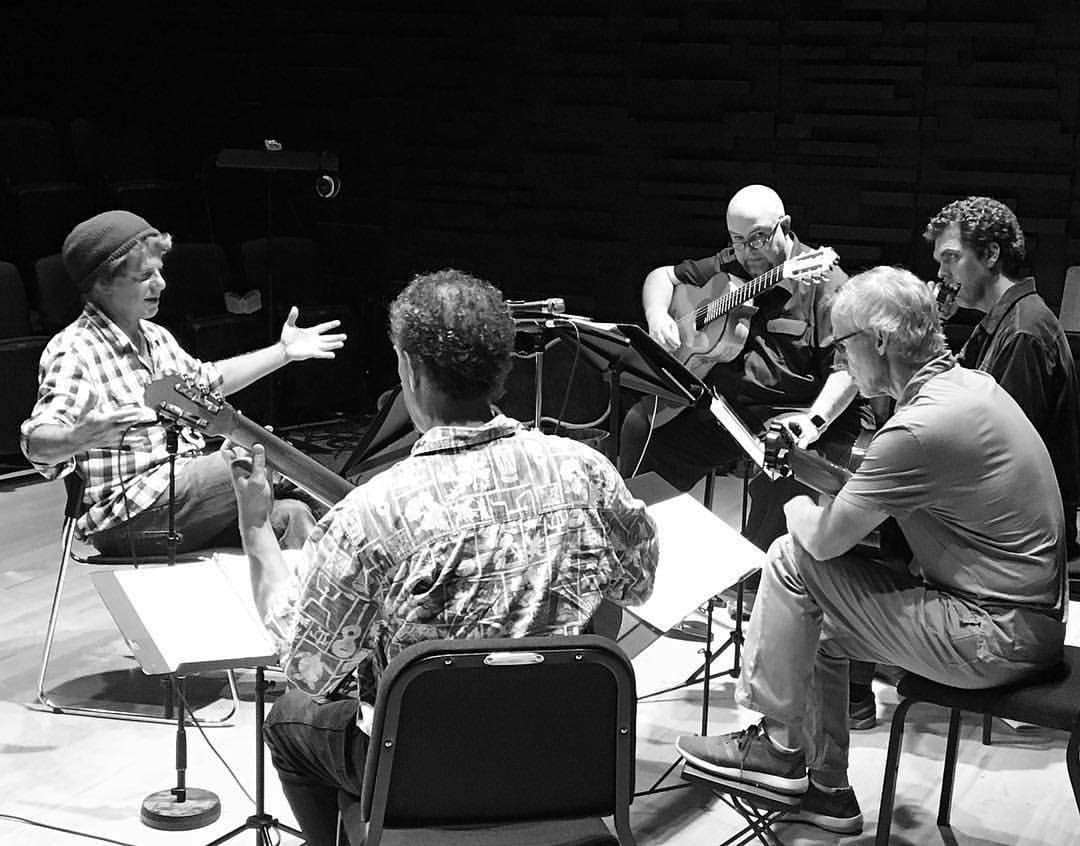
JH: So what keeps the group motivated to take on these new projects and even seek new commissions like that one from Robert Beaser or does it sometimes just fall into the lap of one of you?
BK: We aren’t really project driven but rather it flows in a more organic way. All of these pieces independently either fell into our lap or seemed like the right thing to do and then came together under this concurrent theme. We like to be a little more intuitive about it and see where our passion pulls us rather than being cold and calculated about it.
JH: You mentioned Phillip Houghton was a synesthete and my question is: Are any of the members of the quartet also synesthetes?
BK: Nobody in our group can see the sound! I do think one of the hallmarks of our group is that we’re extremely focused on tone color and how to modulate that moment by moment.
JH: Are there any other pieces from the album you’d like to comment on?
BK: There is one tune that is an arrangement of a preexisting tune that Matt Grief did and it’s from one of my absolute guitar heroes and Matt’s too, Michael Hedges. He redefined what steel string acoustic guitar could be using these unusual tunings and especially right-hand tapping technique. We really wanted to include Matt’s arrangement of “Aerial Boundaries” which is almost a straight cover of the tune but there’s this brief excursion that Matt Greif took where it goes to a groovy 12/8 section and then morphs back to the original tune. It’s very elegant how Matt set it and certainly the imagery and vibe of “Aerial Boundaries” fit this project really well.
JH: Wrapping up here, LAGQ celebrates 40 years together that included much touring and many monumental recordings. I just wonder what’s next for LAGQ? Do you have 40 more years in you?
BK: Oh absolutely 40 more years! This summer we had the honor of being inducted into the GFA
(Guitar Foundation of America) hall of fame. Pepe Romero, our teacher, mentor, and friend, helped present the award and said his quartet, The Romeros, were celebrating their 60th anniversary and we were celebrating our 40th so it was 100 years of guitar quartet on the stage.
JH: So being at the GFA and taking it all in, personally what does the future of guitar and guitar ensemble music look like to you?
BK: I do have to say we have a fair amount of pride in playing a small part in legitimizing the genre of 4 guitars as a viable concert medium. There were certainly lots of wonderful predecessors, but in the last 40 years there has been an explosion of guitar ensembles all over the planet and almost every place we go there are professional guitar quartets. And if you look at the catalogue of arrangements and compositions for 4 guitars, it too has exploded. Ensembles also develop skills for guitar players that we typically don’t develop in solitary environments. The idea of being a chamber musician is an essential musical skill. So I think the guitar quartet is here to stay.
JH: That’s inspiring, thank you. I look forward to the Franklin Theatre show. Thank you for taking the time to talk with me Bill.
From the Gateway Chamber Orchestra
With Golijov’s ‘La Pasion’ Gateway Lifts Every Voice in Clarksville
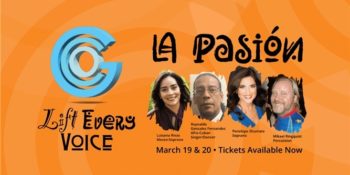
On March 19-20 Gregory Wolynec brought his Gateway Chamber Orchestra (GCO) to the beautiful Mabry Concert Hall at Austin Peay State University in Clarksville to perform the rarely heard La Pasión según San Markos (The Passion According to St. Mark), composed in 2000 by Osvaldo Golijov. This epic work needs to be experienced live; it is a multivalent, intertextual work sung in Spanish and Aramaic,
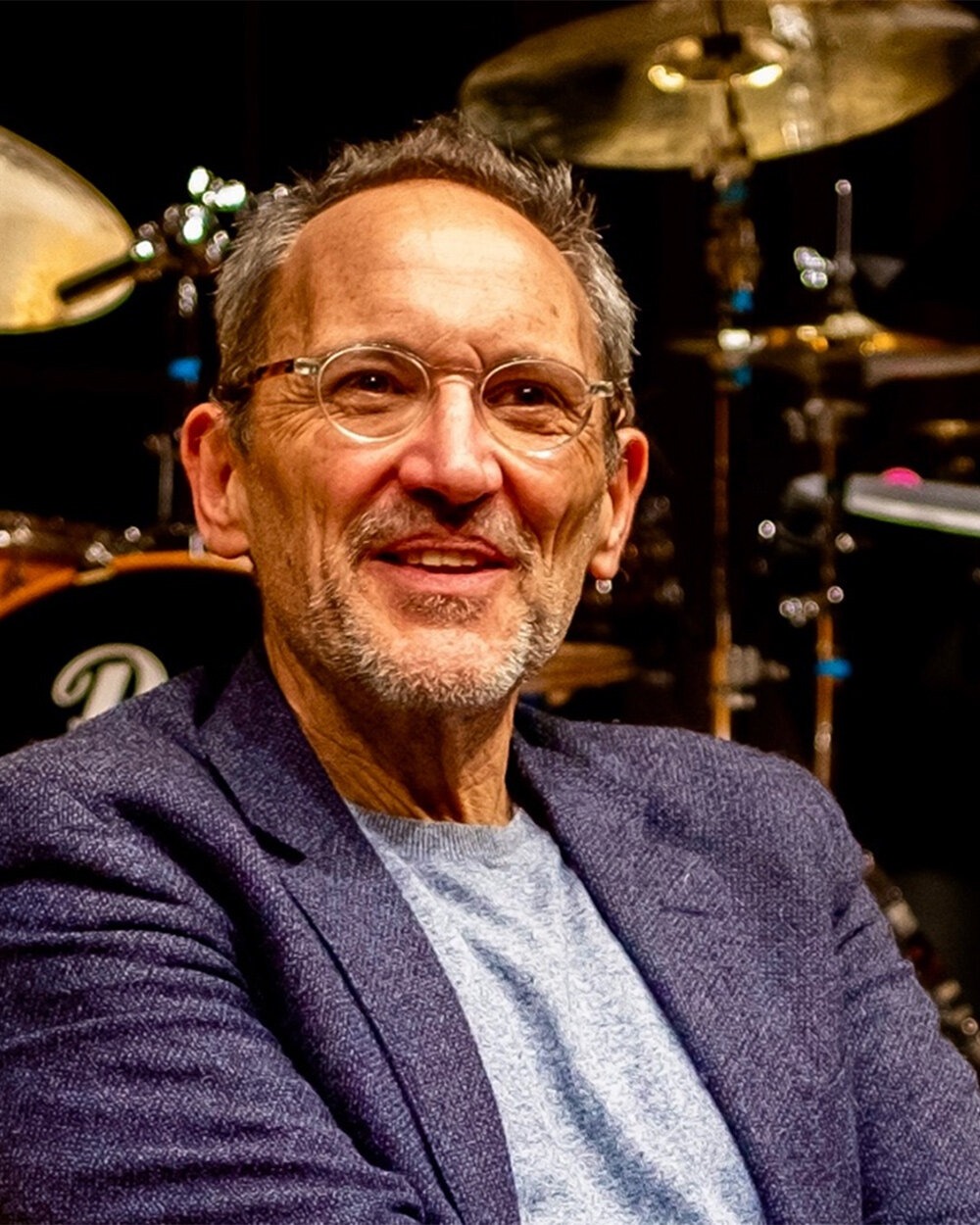
featuring a score that combines instrumental, choral, song, dance, and dramatic expressions in several Latin, African, European popular and classical styles performed by over 54 voices (with 8 soloists) a battery of percussion instruments and a small orchestra. In an amazing evening, the GCO gave an astonishing performance of this captivating and inspiring music.
Golijov composed the work as a result of a request from the Internationale Bachakademie Stuttgart in 1996, seeking to commemorate the 250th anniversary of the great German composer Johann Sebastian Bach. He initially conceived it to pay homage to Bach’s St. Matthew Passion. However, Golijov chose to depict … “a Jesus that is as true as Bach’s but has so far remained for the most part unheard […] a dark Jesus, and not a pale European Jesus” setting “Jesus’ last days on earth seen through the Latin American experience and what it implies.” Of course, Golijov’s work is part of a broader expression of the spell that J.S. Bach has held over contemporary Hispanic composers–Heitor Villa-Lobos’ collection Bachianas Brasileiras are just one famous example.
Golijov’s Passion is set in 34 movements grouped into two parts, roughly divided before and after the arrest of Jesus by the Romans. He creates cyclicity, unifying separate movements and parts, from the outset by incorporating musical reminiscences of the crucifixion in the opening Visión: Bautismo en la cruz (Vision: Baptism on the Cross). The style of this movement, along with the second movement, is Latin inspired, but largely in Golijov’s advanced quartal language electrified by extensive syncopation and inventive orchestration. Golijov’s orchestral genius, (demonstrated early by the electronically enhanced accordion and the quaking strings of the first movement), and Wolynec’s inspired maintenance of balance were the headline of the movement, allowing the piano (Stephen Kummer) and guitar (Chip Henderson) to support without drowning out the berimbau (a Capoeira instrument) at the front of the stage. Paciencia, the dancer playing the berimbau and dancing Capoeira (with just a touch of break) showed a remarkable charisma throughout the evening. As the Fisherman, and several other roles, Reynaldo Gonzalez Fernandez also deserves special mention for his vocalizations and captivating portrayal of Christ.
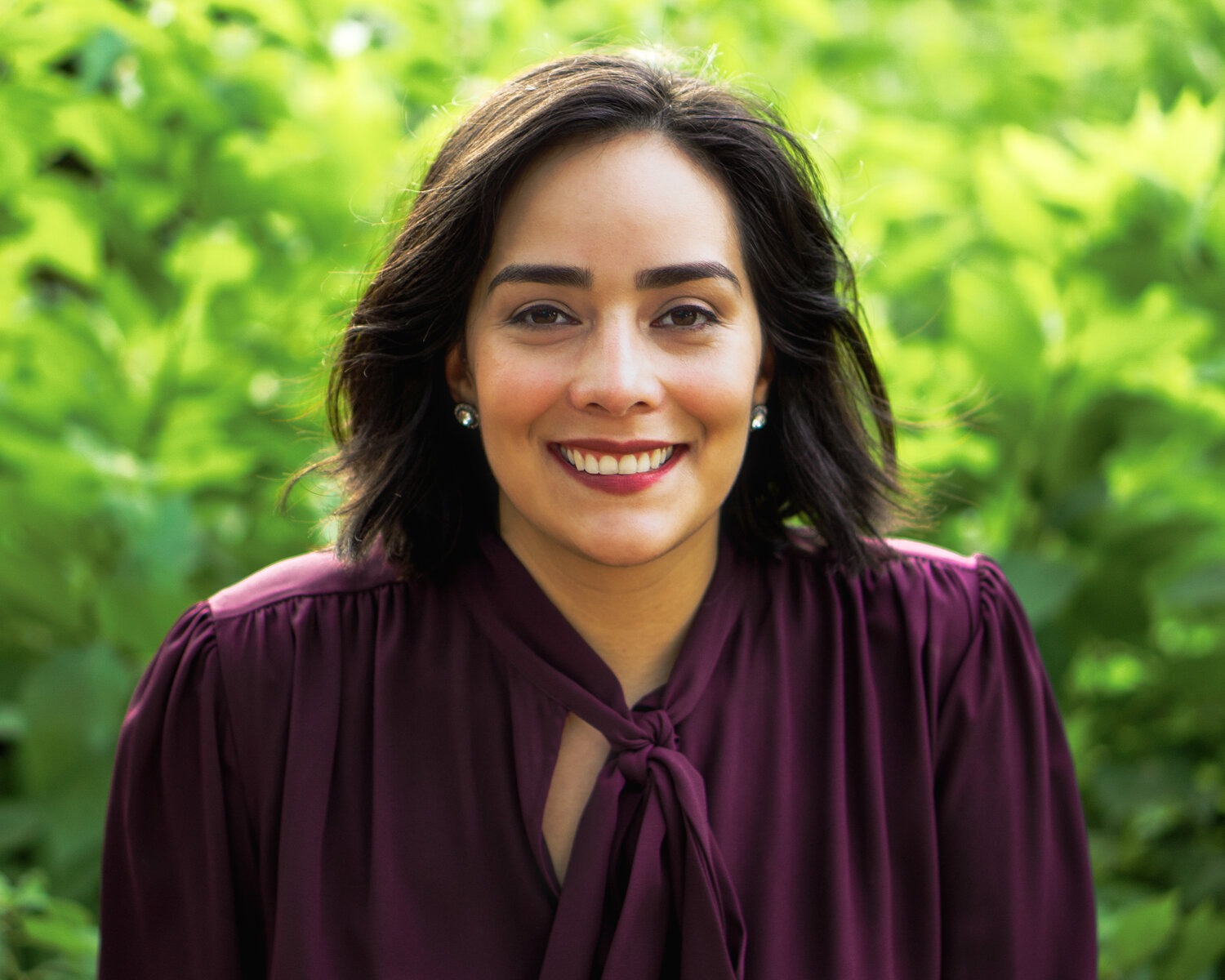
As demonstrated by his employment of Capoeira, with its place on the boundary between fighting and dancing, the styles that Golijov incorporates into his work are consistently employed in ways that apply their original function. Another example is in the three Announcements (Numbers 3-5). All feature a Batá ensemble (a three drum percussion section common from in the Santeria practice) played extraordinarily well by principal Mikael Ringquist, Marcus Santos and David Steinquest. Indeed, along with Joshua Graham and Joshua Hermantin, the entire percussion ensemble displayed an unimaginably diverse knowledge of styles and instruments throughout the evening. Here, the three numbers of the Announcements lead through a section that seems to connect to the African storytelling drum tradition and leads back to the Santeria inspired sound before finally climaxing in a mesmerizing, improvised, “storm” for the Batá drums. It is worth noting that Golijov’s collage of genres (Santeria, Capoeira, Flamenco, Cuban son, Samba, Gregorian chant, etc etc) are no less meaningful than Bach’s Arias, Recitatives and Choruses. Each in its own way becomes a culturally significant post-modern expression of the underlying text of Christ’s passion.
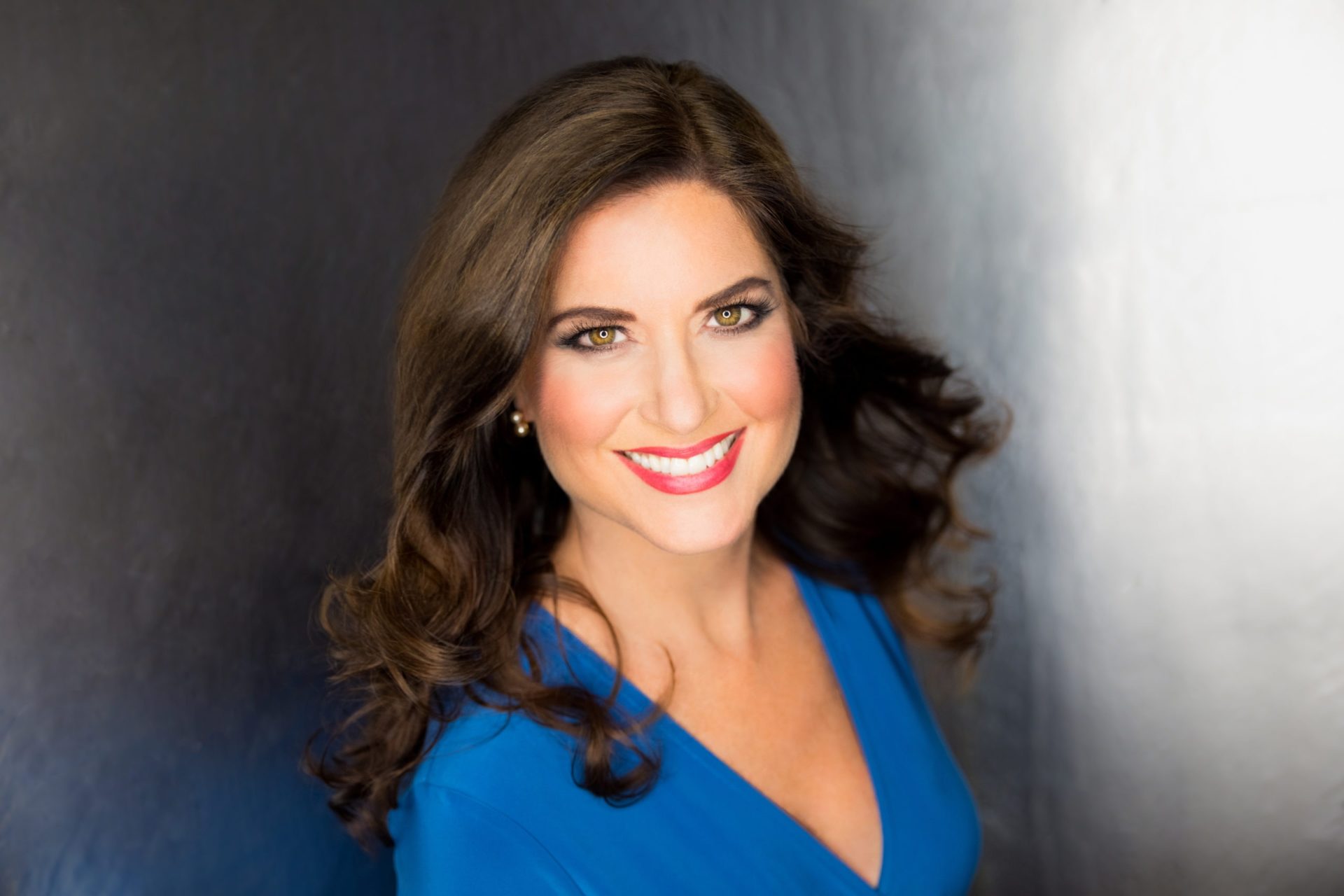
Soloists Luisana Rivas and Penelope Shumate each brought a differing, yet equally powerful presence to the stage. Rivas, particularly in the flamenco inspired 13th number “Quisiera Yo Renegar (Aria de Judas)” sang with a heart-rending expression from her softly dark but quite resonant voice. Penelope Shumate, in the next number, “Eucaristia,” carried a lighter, stoically graceful soprano that soared above the women’s section of the choir that accompanied her.
Drawn from the Gateway Chorus, soprano Ninfa Garcia’s performance in the 8th number was downright riveting while tenor Giulio Garner coupled a very personable stage presence and a beautiful, trumpeting tenor. Douglas Rose and Wolynec’s chorus was immaculately prepared for the evening with precise intonation and a marvelous, blended diction. While the drama required the chorus to often carry a serious countenance, one could tell from their sparkling eyes that they were both prepared and enjoying themselves. My favorite numbers were the last two, “Muerte” and “Kaddish” the latter of which is a Jewish prayer of mourning that is not typically included in the Passion story. In these numbers the percussion has undertaken a minimalist tone when it eventually drops out. The piece ends with a chilling “amen” sung softly by the entire choir arriving at a modal resolution in a major key. Silence filled the hall for nearly a minute before the audience leapt to their feet in ovation. In all, there isn’t nearly the space here to describe the many innovations of Golijov’s score, from the bullfight (No. 27) to the blank score pages (No. 21). There is just too much to discover in what may be fairly described as the first masterwork of the 21st Century. GCO deserves accolades for bringing it to us!
One of the things that I like most about living in the Music City is the abundance and diversity of musical styles that one can hear on any given night. The Nashville Symphony has long had a well-deserved reputation for being a proponent of contemporary classical music and on this very night they presented an “Evening of Firsts.” However, the ticket of the evening, indeed of the season so far, was for a concert the GCO held in this beautiful little hall in Clarksville, with too many empty seats. The Gateway Chamber Orchestra returns (to Clarksville and Franklin) on April 23-24 with Gustav Mahler’s Symphony No.2 “Resurrection.” Tickets are available online here: https://www.gatewaychamberorchestra.com/tickets
The Nashville Symphony at the Schermerhorn
Kip Winger’s Symphony No. 1 and the Semiotics of the Musical Sublime
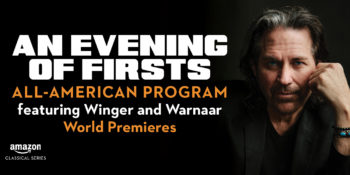
This past weekend, the Nashville Symphony presented its “Evening of Firsts,” a concert program featuring the premieres of works by Kip Winger, songwriter and rock musician turned composer, and Brad Warnaar, a prolific film score composer and orchestrator, alongside John Adams’ The Chairman Dances and Samuel Barber’s Symphony No. 1, Op. 9. While the program itself might lack some central, overarching thrust or theme of note (not even the official title of the program accounts for the presence of the Adams), the performances of these works showcased the strengths of the NSO as an ensemble, above all Guerrero’s ability to coax an almost-ethereal lushness out of the strings, especially during lyrical moments, and the technical precision of the woodwinds during some rather sadistic passages (Barber was especially cruel to the bassoons!). The main attraction of the night, though, was neither the Adams nor the Barber, despite how well performed. Instead, the two premieres were the center of attention, especially the new work, Symphony No. 1 “Atonement,” by Kip Winger, whose face looks out at us gravely from all of the concert’s promotional materials and even the program notes. No doubt the focus on Winger himself was primarily a marketing question, banking on the recognition of his face and name to sell tickets to those who might not otherwise ever pay to see the Symphony, let alone on a night featuring mostly music by living composers. And yet, despite what might seem like cynicism, I feel that Winger’s first symphony did deserve its pride of place on the program, and not just on the merits of its composition. The work, almost certainly through sheer accident, manages to partially invert and thus short-circuit a number of general cultural metaphors about music in a way worth detailing at length.
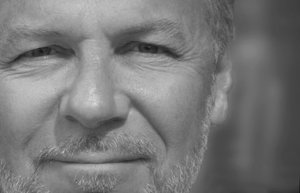
Before that, though, it’s worth first giving attention to Brad Warnaar’s very charming Cornet Concerto, which has unfortunately been mostly overshadowed by Winger’s Symphony. The concerto is in three movements, structured as a pensive lyrical movement (entitled “Bill Moore”) couched between two up-tempo ones. The first movement, “And You Are?…,” is chock-full of direct and indirect references to Sousa’s marches, but always in the context of a playful polystylism less reminiscent of Luciano Berio than Carl Stalling. The interplay of angular passages of non-tertian harmony and the technicolor bravura of a military wind band are delightful, but the ensemble writing was, only in a few places, a bit overpowering for the cornet solo, here played spectacularly by Blair School of Music Associate Professor of Trumpet José Sibaja. Fortunately, there were no such balance issues in the third movement, “The Ta-ca-Ta-ca Toccata,” which, as the title suggests, takes a quick, repeated sixteenth-note figure as its central motivic idea, which is not only developed brilliantly as it moves between the cornet solo and the orchestra, but also gave plenty of opportunity for Sibaja to show off his machine gun-fire articulation. This last movement is certainly the strongest of the three, but without question Warnaar’s concerto is an overall great showpiece for the cornet, something Warnaar shows we could do with more of in general.
Now to Winger’s Symphony No. 1 and its subtitle “Atonement.” “The idea [of the piece],” Winger tells us directly in a promotional video for the NSO premiere uploaded to his Twitter account, “is that a person receives Morse code messages of atonement from his own lost soul.” Each of the four movements is given a programmatic title, “S.O.S.,” “Eleos,” “Metamorphosis,” and “Metanoia,” each movement then depicting its respective stage of this process of atonement. So far, there is nothing too out of the ordinary here. There’s certainly nothing unprecedented about this kind of programmatic work, where each movement functions more or less as a character piece, a purely musico-metaphorical signifier for the signified hinted at in the piece’s title. And while this particular setup, commonplace as it may be, already presents some logical holes on the semiotics side of things (can the music of a particular movement really be said to signify its intended signified, if that signification is only legible in the presence of an altogether different signifier in the first place, i.e., the word in the movement title?) what Winger presents us here is yet another degree more complicated by the introduction of Morse code. Yes, Winger is not being metaphorical when he says that his symphony portrays someone receiving “Morse code messages” from the soul. He’s being dead-on literal. The movement titles in this work are not simply the de-coder ring given to us by the composer to make sense of the floating signs and sonic imagery of a particular movement—they are, in the process of being encoded into the long and short bursts of Morse code, also rendered into a new set of sonic, non-verbal signifiers. In other words, these movement titles are not an external means of understanding the piece—they are, in a fairly unique way, part of its very musical material.
Consider this in light of the quite tired cliché that “where words fail, music speaks,” a misquote of a line in Hans Christian Anderson’s “What the Moon Saw.” As easy as it may be to write this notion off as something facile, it nonetheless, even despite its gross oversimplification, manages to capture the sense of how we expect music (and above all classical music) to function. I say this not as a defense of the cliché, but rather to underscore that what may account for its persistence (just think of the countless times some derivation of the below image makes its way around social media) is that despite all better judgement, much of the way we talk about musical narrative, much of the way we fundamentally expect music to work, relies on some version of it anyways. Think of the adage “I know very well, but nevertheless…”
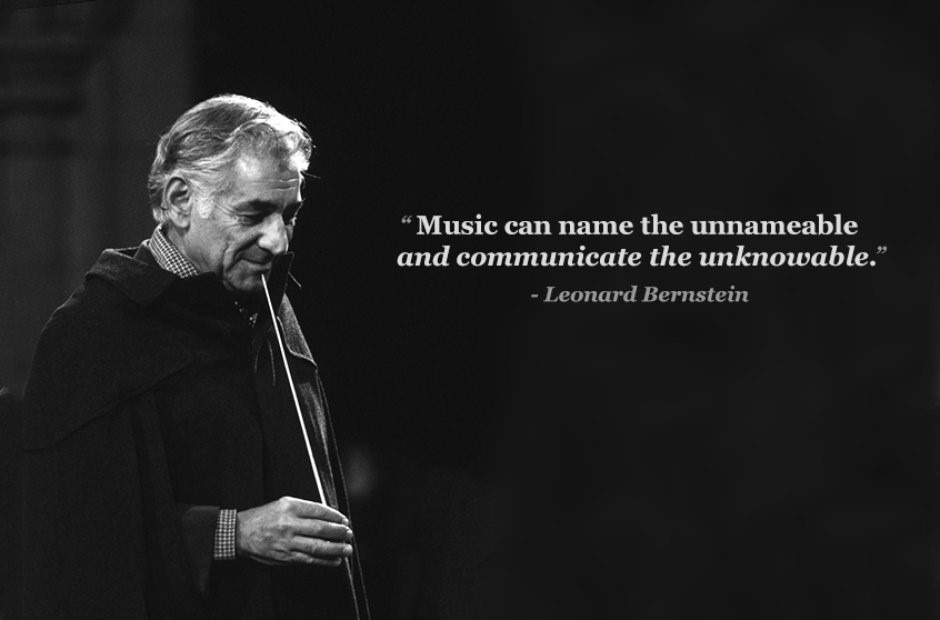
To explain what I mean, take the initial notion of a programmatic symphony I described, where movement titles work like the legend of a map to provide the listener with some very loose framework to interpret the sounds they encounter. The specific signifiers in the movement titles are necessary, but only insofar as they allow us to begin making sense of the entirely different sonic signifiers in the music itself. These musical sonic signifiers, at least as far as we tend to believe, by their nature as elastic and dynamic and multivalent, containing an overwhelming amount of potential signification, enable a non-geographical space where ideas normally beyond the realm of symbolization are freed of their constraints. Thus to be even remotely sensible they need the movement titles, and their reliance on our rather commonplace, practical world of everyday, necessarily-limited semantic language, which allow us into that non-space of music not despite but because of their limitations, of their “failure to speak.” But it is the contact with the non-verbal world of music (the music itself) that occupies our fascination and is the object of our analysis and study. This is, in short, the Romantic idea of the musical sublime—that which sits beyond the cusp of the sensible, something which is contained in nature, in music, in any such place where we might encounter it, but cannot be contained by it. The sublime not only resists our efforts to symbolize it, to draw it into the order of the comprehensible, it is categorically opposed to it, transcends it. It is something breathtaking, in both the positive sense of its beauty (if the word “beauty” can even begin to account for it at all) and in the sense of its earth-shattering force of destruction.
The formal scheme of Winger’s Symphony No. 1, then, at least partially inverts this process. I say partially because the journey is not one in the opposite direction. We are not simply moving in reverse from the Realm Beyond back into the mundane world of speech. The program of his symphony still relies on a similar metaphor—namely, that music might contain truth. The central figure of Winger’s symphony, the one who hears the Morse code, is still being “spoken to” by the music. However, the truth this figure is seeking out is not one that must be found in a realm beyond symbolization. Truth is not accessed by pivoting from a limited/limiting signifier into a sublime one, it must merely be decoded. That is, the “Great Truth” of Winger’s symphony is an immanent one—one that was always already there.
That is, the “Great Truth” of Winger’s symphony is an immanent one—one that was always already there.
I should be clear here. I am not offering up a “traditional” understanding of a programmatic symphony and then arguing that what Winger has written constitutes either some completely novel model or even one that fundamentally misunderstands the original. In fact, this partial inversion of the musical metaphor of the sublime is only operable in the way the symphony is planned out, but not really in the way Winger actually composes it. Yes, there are plenty of instances in “the music itself” where the presence of the Morse code is literal, and this no doubt ratchets up the semiotic complexity of the piece, but even despite this, Winger’s music is still primarily interested in conveying some affect or other ineffable quality of its movement titles. “S.O.S.” is not merely a presentation of a musicalized Morse code message which is then developed symphonically. Its harsh dissonances, the jagged syncopation of the S.O.S. rhythm itself, the way the whole movement climaxes with long, loud tutti orchestral hits a la the end of Holst’s “Mars,” all of these are expressionistic significations of crisis itself. The second movement “Eleos,” mercy, in contrast is quiet, serene—if there was even a single iteration of the Morse code for the word eleos I never noticed it, perhaps signaling the fundamental irrationality, even sublimity of clemency. In other words, I’m not claiming that Winger’s symphony really sits so far removed from our usual Romantic metaphors. Instead, there’s something about introducing the element of the Morse code to the musical context—something about translating a word into iterable pitches and durations—that reveals, at least temporarily, an irreconcilable rift in the usual logic. We see the uncanny double of Romantic music in Morse code. We are forced to confront, in a way far more direct than usual, that a fundamental leap of logic must occur to project symbolic order onto the formlessness of music. The reason this might present itself to us as a crisis has less to do with our love of music per se, I believe, and more to do with the way we transfer onto music our feelings about subjectivity itself.
Now this claim may itself seem like a fundamental leap of logic, and perhaps it is, but I don’t think it’s unwarranted. Remember Winger himself tells us that these Morse code messages are coming from the soul. Here I think we truly see the legacy of the sublime on Winger’s program. The confrontation with Nature in Romantic art, literature, and music is, of course, non-literal. It is a projection, a transference, of the internal search for meaning onto an imaginary external space. The sublime is not only something above and beyond us. Indeed, in the context of Psychoanalysis, this same void of the un-signifiable sits at the core of our subjectivities. The search for musical meaning, then, is but another transference, from the interior, where confrontation with the void is dangerous, characterized by the obliteration of subjectivity itself, onto music, where the same phenomenon is rendered (relatively) safe, bounded by its status as musical object. Perhaps this is the role of the Morse code in Winger’s piece. It isn’t so much an insistence on an immanent world, where truth is written into the very structure of reality itself, but instead a necessary displacement, a quasi-willful conjuring of a doppelgänger as means of keeping the sublime of the self (what Lacan called the Real) at a healthy distance.
New from First Hand Records
Sarah Cahill’s The Future is Female Volume 1: In Nature.
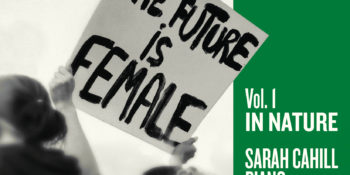
Pianist Sarah Cahill is no stranger to tackling specific themes for her hefty piano-based output. With past projects revolving around piano music on the subject of peace (A Sweeter Music), childhood (Playdate) and others, her new project The Future is Female is a sweeping undertaking. Live, it is a flexible program that can be anything from a typical recital performance to a marathon of four to seven hours, drawing on more than 70 women composers from around the globe and across the centuries. When committing selections from this project to a recorded medium for release, Cahill has planned a trilogy of albums, the first of which is available now.
Splitting The Future is Female into 3 separate volumes is by no means an attempt at unnecessarily stretching out the series of recording – the first collection of ten pieces clocks in right around 70 minutes. As a lover of book trilogies, art triptychs, and vinyl triple LPs, this reviewer was enthused about the scope and presentation of this project from the opening lines of the press blurb. An emphatic demonstration of the proliferation of music by women composers that were never introduced into the classical piano canon, Cahill writes that The Future is Female “aims to be a corrective towards rebalancing the repertoire”. Noting as well that this is merely an overview of the possible musics available, representing “only a small fraction of the music by women which is waiting to be performed and heard.” And indeed, through the run time of Volume 1: In Nature, the breadth of hearing music chronologically from the late Baroque era to the present day does instill the feeling of barely scratching the surface.
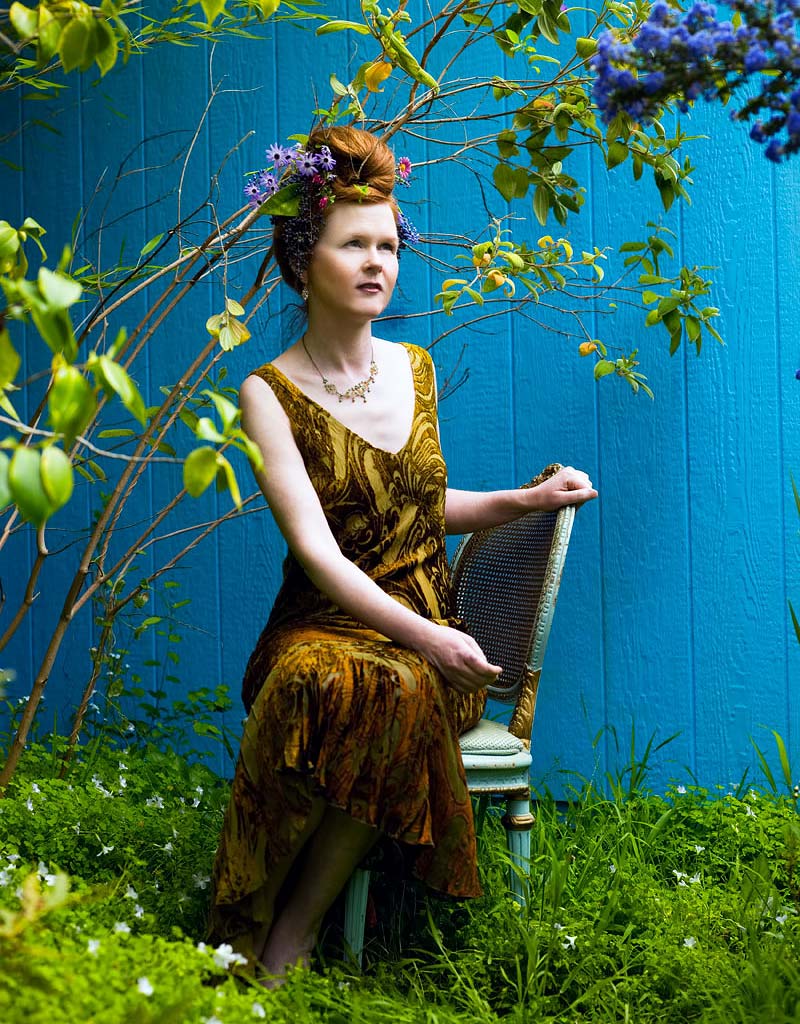
The pieces included on this lead-off effort to the trilogy are rich and varied in their subject matter and approach to composing. Some of the shorter selections could be integrated into a curriculum for intermediate study, for those looking to broaden the repertoire they assign to their own private studios. Birds at Dawn, from Fannie Charles Dillon’s “8 Descriptive Pieces, Op. 20” is included, which fits a number of beautifully contrasting sonorities and flutters into its short 3-minute run time, and is a great example of brief programmatic music that a student could delve into—it is more technically accessible than Messian’s bird catalogs or Liszt’s legends. Again, the inclusion of just a single movement from a set of eight highlights that these selections on the release are an introduction and jumping off point for the listener to seek out more.
Cahill’s performances across this album also serve to show her flexibility as a pianist and interpreter. While deft touch is required for the Dillon and for Anna Bon’s late baroque Keyboard Sonata in b minor, more lush romantic voicings are displayed admirably in the surprisingly rich offerings from Fanny Mendelssohn (two of her Lieder Op. 8) and Leokadiya Kashperova (a single movement from In the Midst of Nature, a 6-movement suite for solo piano). Recorded at a church in California with Matt Carr, the sound mix across the album is a treat for the ears, generally erring on the side of a close-up mix with rich low end, but with pinging higher frequencies that remind the listener of the size of the room when necessary. Occasionally in the loudest moments some buildup of middle frequencies creates moments of brief muddiness during the loudest moments, most noticeably in the Vitezslava Kapralova pieces and opening movement of the Agi Jambor sonata.
The Jambor Piano Sonata: To the Victims of Auschwitz is a particularly effective piece for inclusion on this album, recorded in its entirety. The first movement is a turbulent allegro appassionato, with rhythmically insistent motives that demand the listener never tear their ears away for even a moment. Angular contrapuntal lines are interspersed with more tonal vertical chordal passages. The second movement “Epitaph” is, in contrast, subdued and meditative, with just a couple dramatic swells, remaining in a contemplative or meditative state throughout. While the third movement also is mostly bombast, the coda of the movement to close out of the sonata is a minute of pianissimo unease, with a solitary Bb major chord to bring a sense of finality to the work. Each movement is recognizable in texture and theme for its own sake, but the piece in its presentation as a whole is very memorable, and including the entire sonata on this album was an excellent choice.
Volume 1: In Nature devotes the last few tracks to pieces from three living composers. These too exhibit great contrast, showcasing the unique and varied approaches to piano in the 21st century. Eva Beglarian’s piece “Fireside” contains spoken word (a surprise to hear a human voice come out of the speakers after a solid hour of solo piano music). Deirdre Gribbin’s “Unseen” is an interestingly lopsided composition, with booming low end and clashing high clusters that give way, through softer and softer repetitions, to a second half of quietly descending figures. Finally, Mary D Watkins “Summer Days” ends the album with fascinating arpeggiations and halting jazzy rhythms.
With this first album of The Future is Female, Sarah Cahill has given a strong start to the process of recording her mammoth project. The smorgasbord of composers and single movements of larger sets encourage the listener to use this as a jumping off point for further edification – 70 minutes of music quickly expands to much more as one follows the rabbit trail to find the full compositions elsewhere! The inclusion of a few full sonatas and several standalone pieces serve to give this album a complete feel rather than solely a sampler, a balanced programming decision by Cahill. With much to explore across these 10 pieces, the time will fly by until the following two additional albums are released. Sarah Cahill’s The Future is Female Vol. 1 In Nature is available from First Hand Records here and Vol. 2 at Play is due to be released in September, 2022.
Coming from Sony Classical
Alexis Ffrench calls for us all to re-examine our Truth
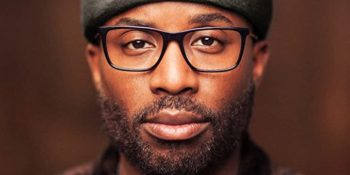
English classical-soul composer Alexis Ffrench will be releasing his third full album this coming May. Titled “Truth,” the album integrates a myriad of genres and soundscapes to tell his story of finding purpose through darkness, encouraging those who listen to do the same.
Ffrench’s promotional material reads, “This all stemmed from Alexis’s own reaction to the brutal murder in 2020 of George Floyd. In his anxiety and distress at what he had witnessed on the news, Alexis turned to music for help, going straight to the piano to compose, as a way of processing what had just happened.”
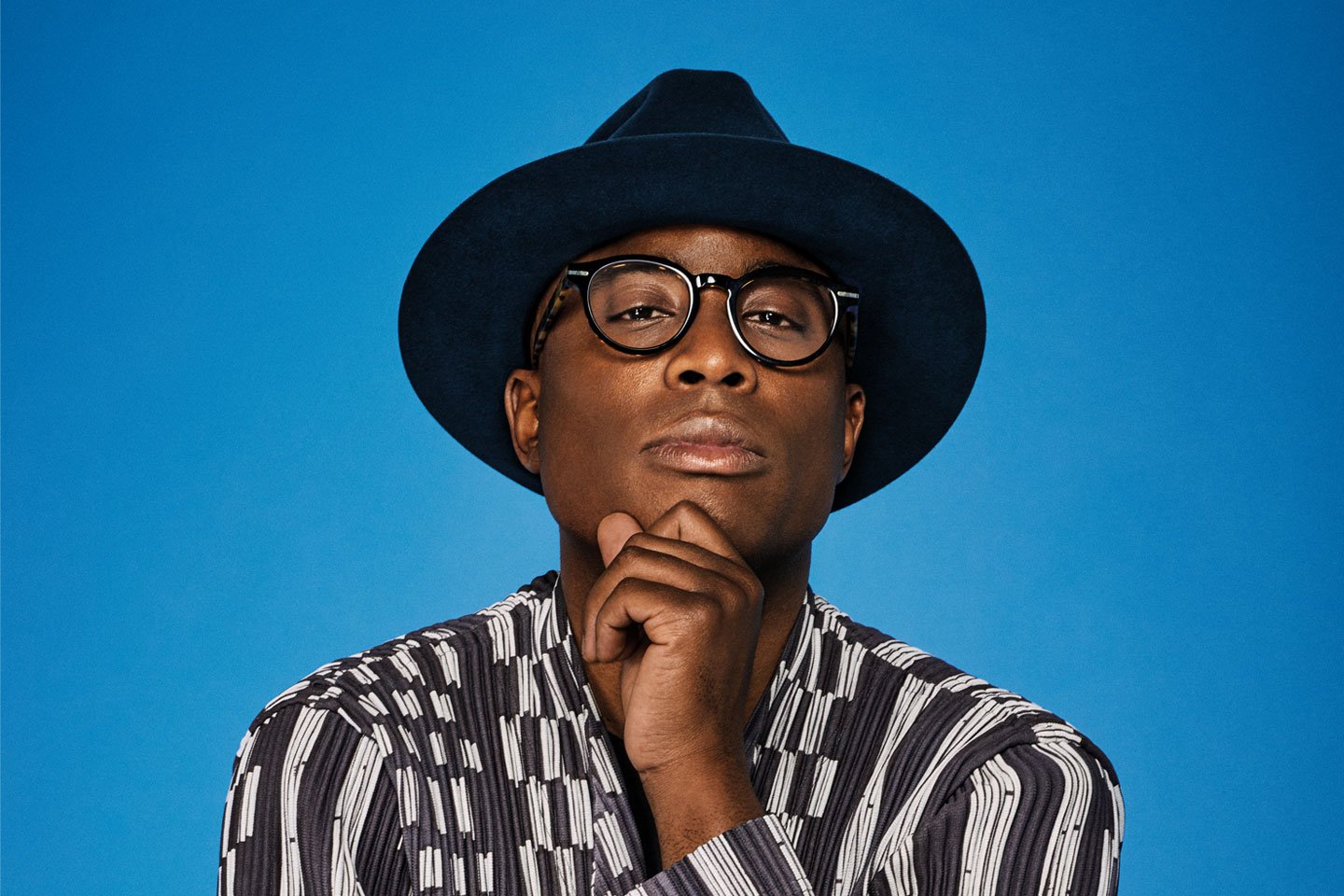
With the pre-requisite knowledge of the work’s background, this author (of Caucasian, Western European descent) felt that this review would be incomplete without representative voices from the community that inspired Ffrench to search for his truth.
On a Zoom call at five o’clock on a Friday evening, Reggie Coleman and Desmond Kirkland graciously offered their time and efforts to participate in a discussion about Truth’s relation to their own experiences with music and with life.
Though both are recent alumni of the Middle Tennessee State University School of Music, their paths never crossed. Reggie graduated in 2018 with his bachelor’s in music education, where he established his reputation as a wonderful addition to the young music educators in Middle Tennessee. His continuous hard work has paid off, as he is now the head band director at the growing program of Rocky Fork Middle School in Smyrna, Tennessee.
The fall semester after Reggie’s commencement, Desmond entered as a first-year master’s student in jazz studies with a specialization in vocal performance. A little over a year after graduating in May 2020, in the wake of the global pandemic, Desmond moved to New York City to be closer to the reawakening musical theater community, where he now lives in upper Manhattan, managing his own vocal studio.
After introductions are made, Reggie and Desmond jump in to discuss their initial impressions of the album, both equipped with pages of notes and talking points.
“I just really appreciated how he turned something that was dark and very upsetting for everybody—or should have been upsetting for everybody—into something so ridiculously beautiful and thought-provoking,” Reggie kicks off the conversation.
Desmond adds to his point, saying, “I think, unfortunately, you cannot separate the Black experience in America while not also addressing the trauma of the experience. And I found it really refreshing to hear hope in every one of his songs… it wasn’t like one of those ‘hope in overshadowing’ or ‘hope to hide the negativity that clearly happened.’ It was hope that was informed by trauma.”
Continuing his opening thoughts, Reggie pointed out that Ffrench also used his gifts to do what he could to make the world a better place, prompting others through his music to do the same. “And then just musically… the tonality throughout—the way he plays with the tone clusters, chord clusters, things like that, and every melody…. Every single piece sounds like a story, from beginning to end. With like rising action, climax, falling, all that, the whole plot graph.”
In conclusion to the first question of initial impressions, Desmond states, “Looking at everyone protest and them not all looking like me was really refreshing. It was really refreshing to see that, okay, like there are people of European descent that are on the frontlines, but also not being performative. And I feel some of that unity in the orchestration of this as well. Like it’s not just him playing piano by himself… clearly, he’s also calling [to] everybody, and they’re playing with him.”
Truth provides a lush and ever-changing sonic environment. Timbres range from the simplicity of a “Clair de Lune”-type piano melody coupled with the rickety mechanics of the same piano Harry Styles used on Fine Line, to genre-bending orchestrations that incorporate electric guitar, to a vocal line that works in tandem to the piano line on top of a string accompaniment. Beautiful melodies are performed by unconventional instrumentation, and tone colors that typically surface front and center in standard orchestrations end up partnering with and taking a backseat to Ffrench’s soulful piano playing.
Reminiscent of transcendental themes reinforced throughout the Romantic era of music, Ffrench uses references to nature almost exclusively. He speaks about the Vaughn Williams-esque seascape tonal elements on “Canyons” in his YouTube series “Talking Truth with Alexis Ffrench.” Additionally, utilizing gorgeous topographical locations in his music videos for “Canyons” and “Guiding Light,” each frame and each chord resonate within the idea of the Sublime. This focus on finding our place within something bigger than our individual selves only serves to reinforce the larger, existential questions he is asking his audience.
Alexis Ffrench doesn’t shy away from extremes, citing Beethoven’s use of dynamics as an influence on his compositional techniques. Even some of the way he juxtaposes piano to the rest of his orchestration is reminiscent of the second movement of Beethoven’s fifth piano concerto. One specific moment that comes to mind is in “Papillon,” where the meandering piano line evokes the image of a butterfly fluttering through the woods, the listener able to observe the natural elements around them.
Taking a moment to discuss each of our standout tracks on the album, Reggie begins with the opening piece, “Canyons.”
“It just sounds way different than everything else. Not that his tone changes, or that the message changes, but for some reason, that one just spoke to me the most. And the melody… is one of the most unique and beautiful melodies I’ve heard in a while…. And I loved how in the second phrase… it’s all the same until it gives you like a color note, if you will. And that note changes… that note shapes that entire phrase, and I can just picture someone sitting at a piano, and it sounds almost improvisatory…. It’s so natural and so simple, and I just love it.”
Desmond pivots to point out the way you can hear the inner workings of the piano in the opening melody of “Canyons”, and how that feels relatable to every music student who listens to it. “I loved hearing it because there was this sense of beauty out of chaos or beauty out of the unknown—the inner workings of things that we don’t often see, or the inner workings of things that are oftentimes hidden and pushed away.”
It felt like a lifting from the trauma…it felt like worship at home
He then moves on to say that “Guiding Light” was his favorite track. “It felt like a lifting from the trauma. It sounded like encouragement—I wrote down it felt like worship at home…. It felt very personal, though somehow still brought me in and let me witness it, and I loved that.”
While perhaps the obvious choice due to the addition of a vocal line, the second track “One Look” featuring Leona Lewis stood out most to this author because of how Ffrench incorporates the vocalization into the texture of the piece.
Reggie expands on this point: “I said that it’s almost as if the piano acts as a partner, and not so much accompaniment to me. Whereas the strings and other things in the background, that to me is what sounds like the accompaniment. And I think the time when she’s vocalizing, I feel she starts to become the accompaniment for the piano in a way…. Eventually, I came to the conclusion that there’s a point of view from the piano, and there’s a point of view from the voice, and they were both longing.”
At this point in the conversation about the grief embedded in that longing for one more look, I ask if it seems intentional to have a Black female vocalist singing “One Look,” in light of poignant imagery coming from the reporting of the protests that centers the mothers and wives who are left behind in the wake of this brutality.
Desmond responds, “Unfortunately too often, we have mothers saying goodbye to their sons, and they will never see them again… hoping for one more look… even if it wasn’t an intentional thing for having a Black female vocalist do that line. It does match the Black female experience of having to say goodbye to someone that should still be here—and if not for the brutality and the racism, would still be here.”
Though geared toward the events that directly affected a single community, Truth feels like an album for everyone. Reggie addresses this rallying call while talking about musical elements that harken to other genres. “It had something for everybody…. I appreciate that because it’s going to take everybody to make any of this better, to make any of this happen…. This album’s for everybody. It’s not for Black people, it’s not for White people, it’s not for Classical musicians, it’s not for Funk—it’s for everyone. Everyone can find something they appreciate, and I think that’s what we need.”
Many, many thanks to both Reggie and Desmond for engaging in this important discourse with me.
You can watch the music videos for “Canyons” and “Guiding Light” and listen to Alexis Ffrench discuss his upcoming release Truth on his YouTube channel.
